The complete history of PlayStation Star Wars games
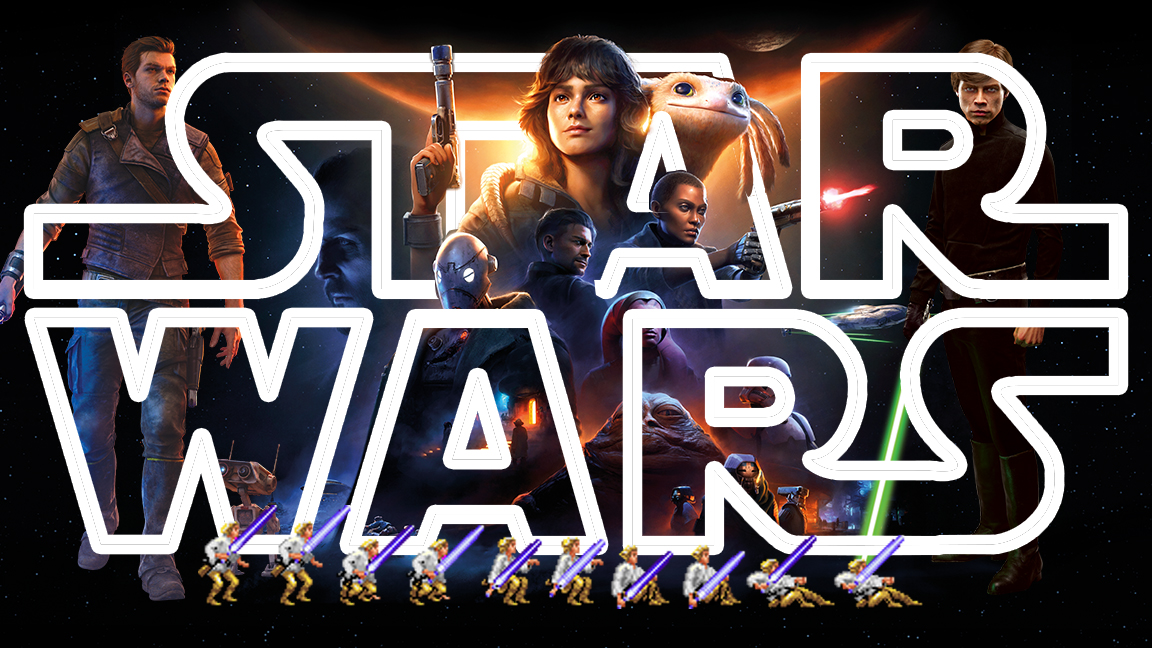
Now is the ideal time to trace the history of Star Wars games on PlayStation, as Ubisoft Massive’s open world video game Star Wars Outlaws is grabbing headlines. From gaming’s earliest days all the way through to PS5, Star Wars is as much a gaming institution as it is a cinematic phenomenon.
Back in 1972, two stark shapes cleaved their way through black space, simultaneously hurling blasts back and forth. That was Pong. It changed gaming forever. Only five years later, in 1977, the film titled simply Star Wars would do the same for movies and pop culture. (Read our rundown of Ralph McQuarries' art for Star Wars for more insights.)
Impressive technology was just as much a part of Star Wars as its narrative – the film perfected special effects techniques (and future movies, like Star Wars: The Phantom Menace, one of the best VFX films of the 90s, continued the work). So too did games go from technical feat to technical feat. Many of the early Star Wars gaming successes, such as the 1983 arcade rail shooter in its iconic cockpit cab and the Atari shooters and 8-bit platformers, have yet to be ported to PlayStation (and that cab is now eye-wateringly expensive).
The series has been embedded in gaming throughout most of the medium’s life. From close adaptations of, and tie-ins to, the big cinema releases to spin-offs that developed Star Wars’ expanded universe as much as the bevy of licensed novels and comics did, Star Wars has done it all in gaming – though EA’s exclusivity deal from 2013 did bring that experimentation to a standstill for a period.
You can read our hands-on with Star Wars Outlaws for what's coming next for this brand, but below we chart the Star Wars games and gaming trends that made a difference on PlayStation (many of the games below released on the best games consoles, including Xbox).
PlayStation Star Wars games: film tie-ins
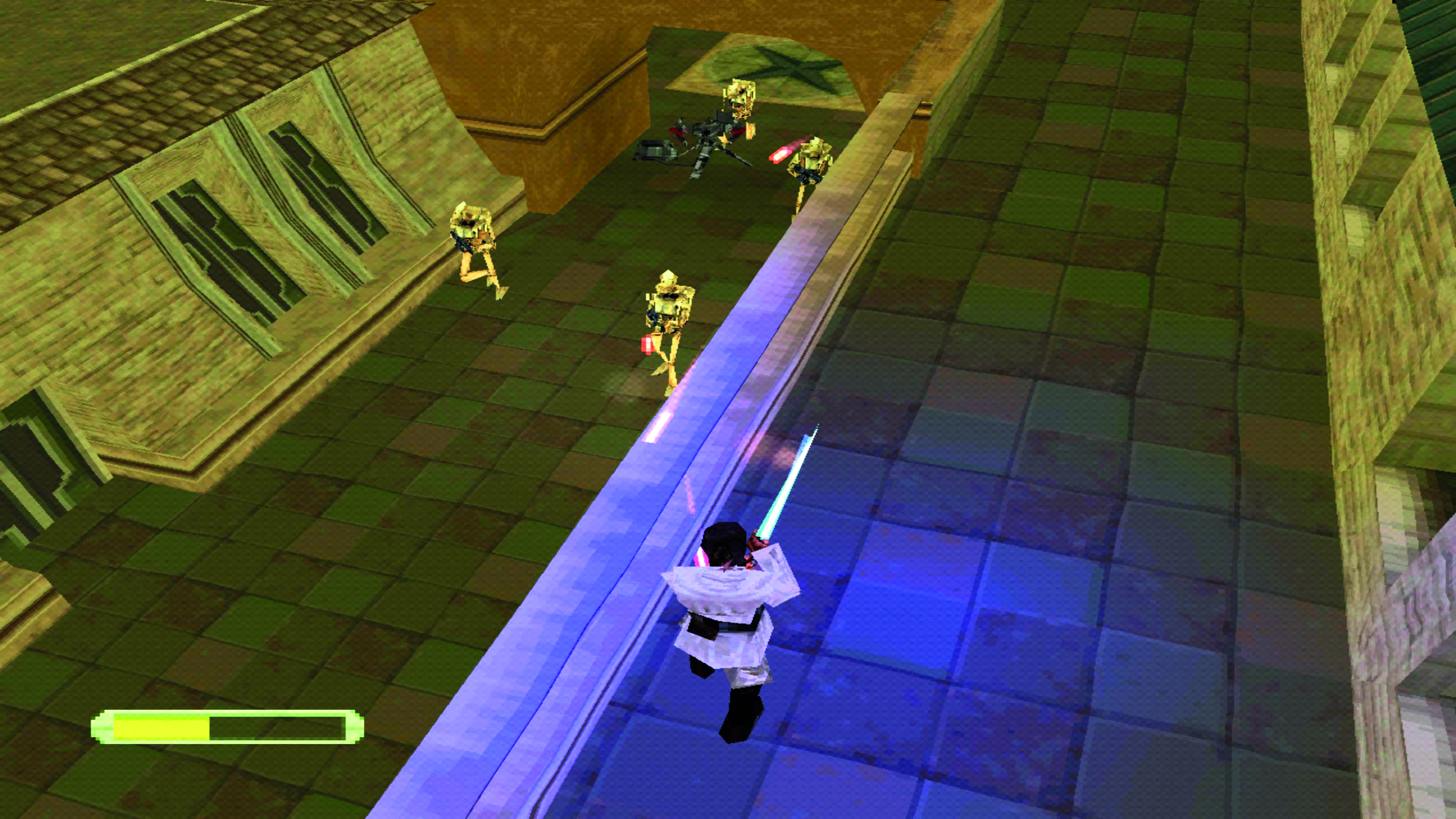
The earliest taste of Star Wars gaming we have predates the original PlayStation, as 1992’s Super Star Wars was eventually rereleased for PS4. Based solely on Episode IV, the 15-year gap between movie and game doesn’t detract from it as an adaptation. Rather, it enhances it.
The leap from 8-bit to 16-bit was truly revolutionary, the extra pixels allowing developers to cram loads more detail and colour into games. Mostly a run-and-gun platformer, Super Star Wars utilised the Mode 7 chip for impressive 3D-like sections, meaning the iconic Death Star assault really comes to life. References to later movies, such as a Sarlaac boss fight in the Tatooine level, even sneak in.
Daily design news, reviews, how-tos and more, as picked by the editors.
As is common for tie-ins, rather than sticking rigidly to the plot of A New Hope it builds out from it in order to deliver the variety players would expect, but whether that’s leaping over womp rats as Luke Skywalker or blasting through an Imperial Hangar as Chewbacca, it evokes the spirit of the movie. The only downside is that Super Star Wars alone came to PlayStation 4, with its two sequels yet to make the jump.

Star Wars was absent from cinemas from ’83 to ’99, meaning the first games on PlayStation were based on the expanded universe rather than films themselves (and we’ll talk more of those later). But when Episode I arrived on the scene, it brought with it a mandate for a merch explosion, videogames included. Which meant a direct film-to-game adaptation that was released immediately after the movie: the aptly titled Star Wars: Episode I – The Phantom Menace.
Developer Big Ape Productions took on the task. It had previously worked with LucasArts on Herc’s Adventures, a spiritual successor to Zombies Ate My Neighbours (which had itself been made by LucasArts – the LucasFilm subsidiary had a keen interest in gaming from its early days, and also developed the Monkey Island and Indiana Jones games). Ditching the cartoon aesthetic of Herc’s Adventures in favour of more realistic visuals [For the time, we promise! – ed], The Phantom Menace nevertheless retained a top-down perspective for its 3D world. Here, levels are more linear, though still feature nooks and crannies with secret pickups, such as guns and grenades for Obi-Wan and Qui-Gon to find.
At times it’s brutally hard – whether that’s simply jumping correctly through hard-to-see platform sequences with tank-like controls or that infamous escort mission. Nonetheless, whirling a lightsaber around and dispatching legions of droids by deflecting their fire is as satisfying today on PS5 (you can download it) as it was at the turn of the millennium. The devs’ bizarre choice to allow your Jedi to mow down citizens remains oddly humorous, the sort of strange rough edge you don’t see as often these days.
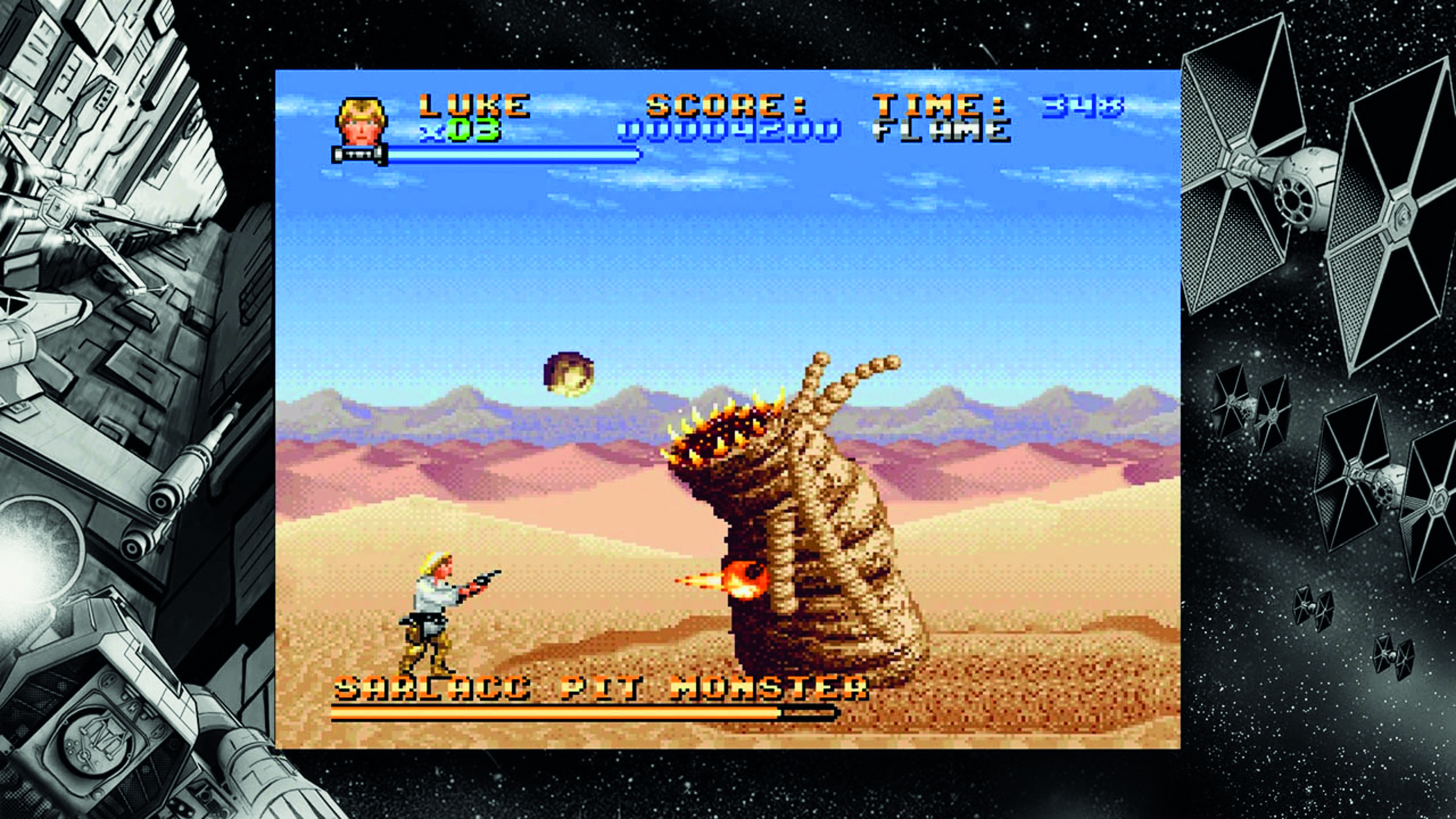
Episode II’s PS2 tie-in game is an odd one, as it begins right where the movie ends (though it was released just a few months after). Named Star Wars: The Clone Wars, it’s one of the earliest Star Wars products to bear the name, released a full year before Genndy Tartakovsky’s animated shorts, and before the long-running TV series.
Beginning with the battle for Geonosis at the end of Episode II, it follows Jedi Mace Windu, Anakin Skywalker, and Obi-Wan as they lead various battles throughout the titular wars. Developed by Pandemic Studios, which would go on to create Star Wars: Battlefront, this was a more action-centric take on the 3D RTSes it was known for (such as Army Men RTS). All about arcade blasting, it’s so vehicle-centric that when you play as Jedi they control the same as the tanks. Multiplayer modes include the distinctly Battlefront-flavoured Conquest mode.
The Collective took point on PS2’s Star Wars: Episode III – The Revenge Of The Sith. Known for licensed action games like Buffy The Vampire Slayer and Indiana Jones And The Emperor’s Tomb, it was a solid studio to take on a fairly straightforward adaptation (which was actually released a week before the movie). This was the year of Devil May Cry 3 and God Of War, and a devotion to lightsaber-and-force combos makes this adaptation feel of a piece with those. To expand the movie to game length sections such as a duel with original character Serra Keto were added, and it was possible to play through scenes deleted from the film.
It’s odd that we stop here, in 2005. What about the sequel trilogy that ran from 2015 to 2019? What indeed. By the time PS4 launched in 2013, the nature of tie-in games had changed, meaning Lego adaptations are the closest we got (more on those if you turn the page). Eclectic, and as noughties as they come, the tie-ins here, all from different studios, remain a fascinating window into another era of licensed releases.
PlayStation Star Wars games: the Lego years
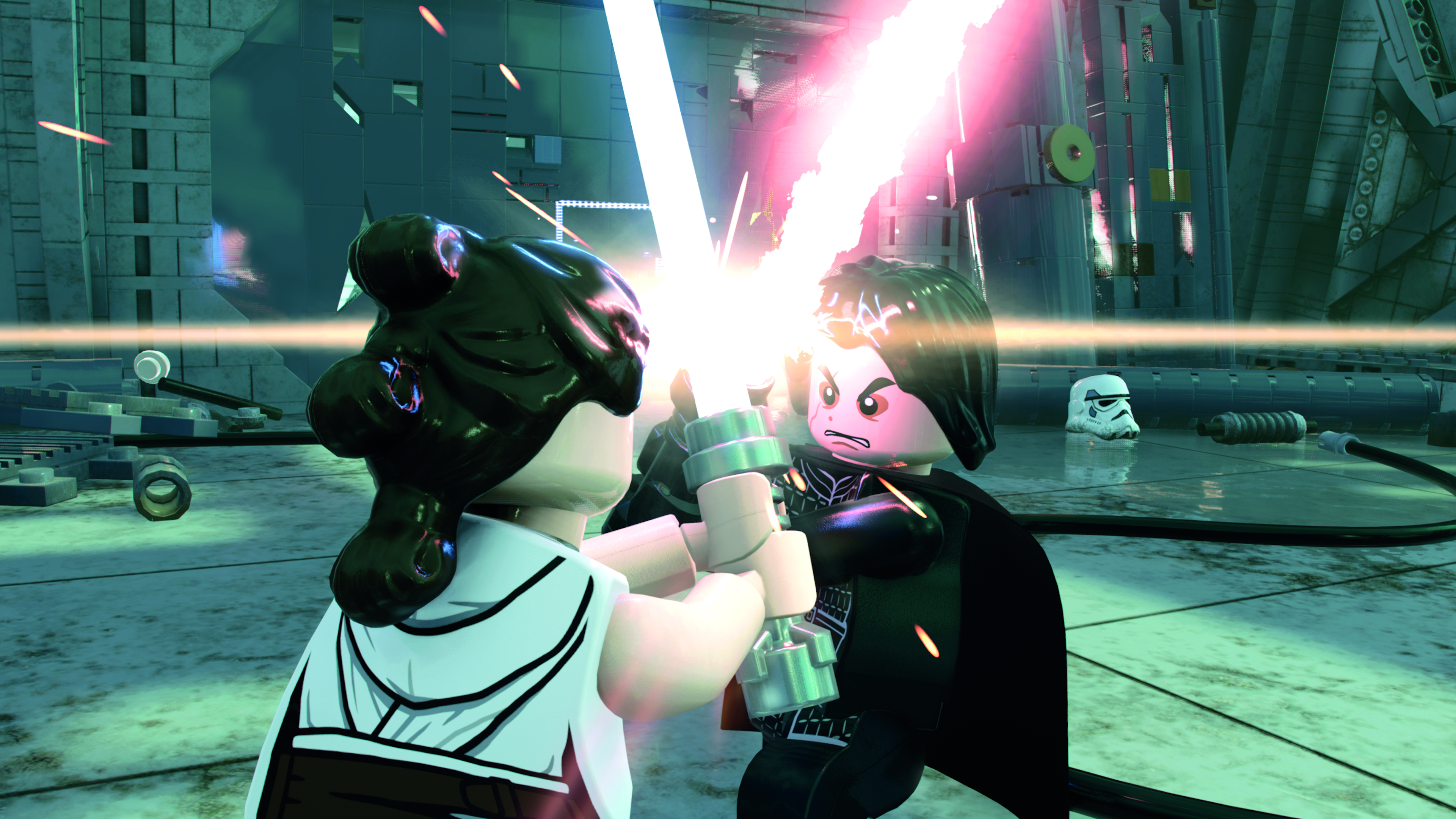
Episode I was accompanied by a massive amount of merch, from dancing dolls to two equally infamous Jar Jar tongues (one you suck, the other you pull). Little of it was as successful as the partnership with Lego. At the time, licensed Lego kits were a rarity – the Star Wars ones were among the first.
And the collaboration was lucrative. Even though the kits were mostly based on the prequel trilogy, they sold so well that it made sense to explore the licence in the already-thriving world of Lego videogames. Developer Traveller’s Tales took on the project, having already proven itself with multiple licensed games from A Bug’s Life to Toy Story 2. Episode III was about to be released in cinemas; the game was not just an adaptation of that movie’s story, but of episodes I to III. Playing out almost as a parody, with unvoiced slapstick comedy scenes (and playable in co-op all the way through), it’s stuffed with Easter eggs and references that show the studio’s love for Star Wars.
Only a few levels are devoted to each movie, based on the most memorable set-pieces. Replaying levels is encouraged as unlockable characters have unique abilities, some of which allow access to secrets. With simple platforming and combat, and unpunishing consequences (if you’re blown to bits, your character simply reassembles), these are easy for anyone to enjoy, especially with a friend. And, thanks to the tongue-in-cheek tone, the the game even makes the sometimes-pompous prequel trilogy more palatable.
A success, its sequel was perhaps one of the most obvious of all time, and did the same for the other Star Wars trilogy as was done for the prequels. Adapting the classic movies gave the studio even more excuse to show its team’s obvious love of the series’ roots, and to improve the formula. That meant more (and better designed) vehicle sections, even more reasons to replay levels with more unlockable characters, and a host of technical advancements. It was just enough of an improvement to warrant backporting elements to the original via Lego Star Wars: The Complete Saga, which combined both games while bringing them to PS3, with extra levels to boot.
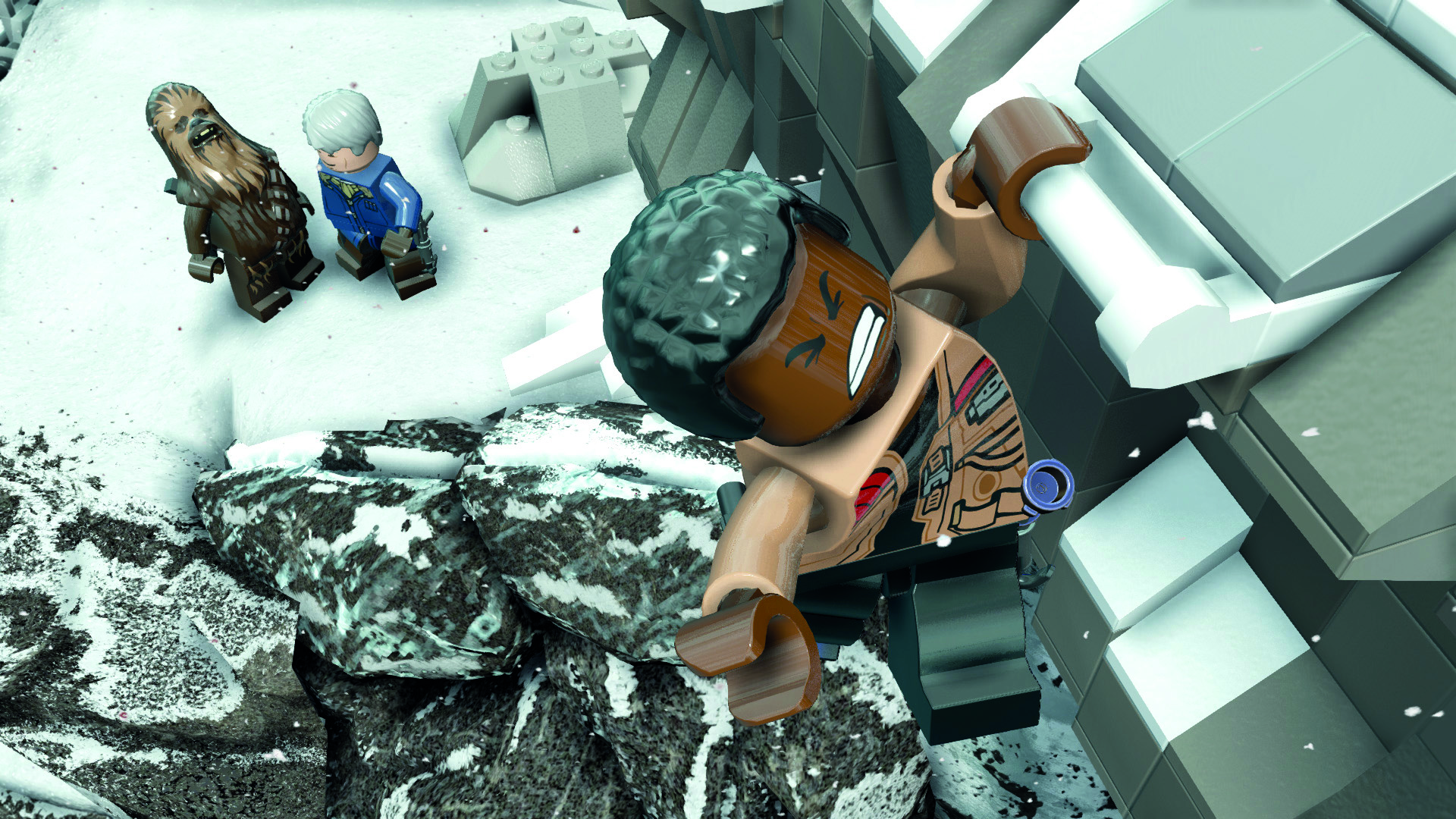
But where could the games go from there? Traveller’s Tales had run out of Star Wars movies to adapt. This led to the studio applying the same formula to other licences (including Indiana Jones, Batman, and more) with varying degrees of success.
Time eventually presented another opportunity, even without new live-action Star Wars to draw upon. In 2011, Lego Star Wars III: The Clone Wars adapted parts of the animated movie and key story arcs from the first two seasons of its TV show spinoff. Embracing the non-linear nature of the animated series, the game’s split-branch structure allows you to pursue thwarting the villainous schemes of Count Dooku, General Grievous, and Asajj Ventress in any order you wish (though that’s not the case with the PSP port).
The Clone Wars represented a big technical leap forward for Lego games; it was now possible to display loads of colourful Lego models on screen at once. Yet this game underperformed compared to its predecessors, possibly as a result of not being based on popular movies, making this a bit of a Lego hidden gem.
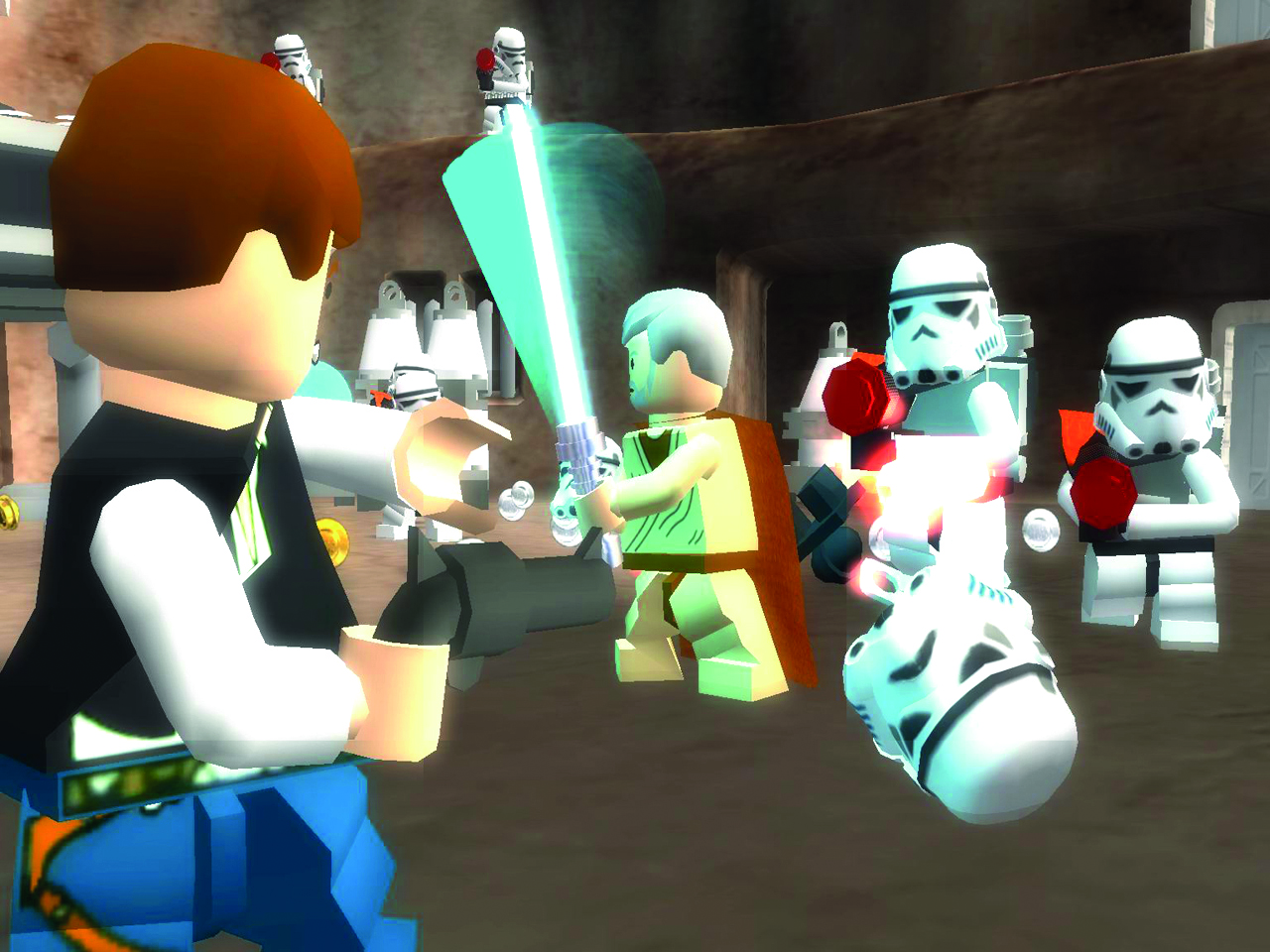
Finding movies to adapt cleanly into Lego games continued to be a challenge for Traveller’s Tales, which attempted to introduce the idea of gamifying discrete parts of a large series via games like Lego Indiana Jones: The Adventure Continues and Lego The Hobbit.
So when Episode VII released, we had Lego Star Wars: The Force Awakens (developed by TT Fusion), based solely on the corresponding movie. While enjoyable enough, you can’t shake the feeling that the story’s been stretched thinly to fill the length of a game – the complete opposite of the cherry-picked whistle-stop tour approach taken for its predecessors. Which means, like The Clone Wars, no direct sequels adapting the rest of the material followed. Instead, Traveller’s Tales returned to the franchise for Lego Star Wars: The Skywalker Saga. Unlike The Complete Saga, this was no straightforward collection of previous games, but a complete ground-up reimagining of all nine mainline movies with brand-new mechanics and a fresh structure.
Open world hub areas mean that outside of missions the maps are packed with puzzles to pick apart; though it does come at the cost of making a lot of the story feel like running between waypoints with only very short discrete levels. However, in retaining the series’ trademark sense of humour and having a truly gigantic character list (with some possessing unique powers to ensure they were used for certain puzzles), this massive package really did feel all-encompassing; DLC packs even added characters from later TV shows. What’s next? While a slapstick reproduction of Andor’s tense political thriller might feel a bit odd, we’re sure a Lego adventure with Mando and Grogu certainly wouldn’t go amiss.
PlayStation Star Wars games: racers
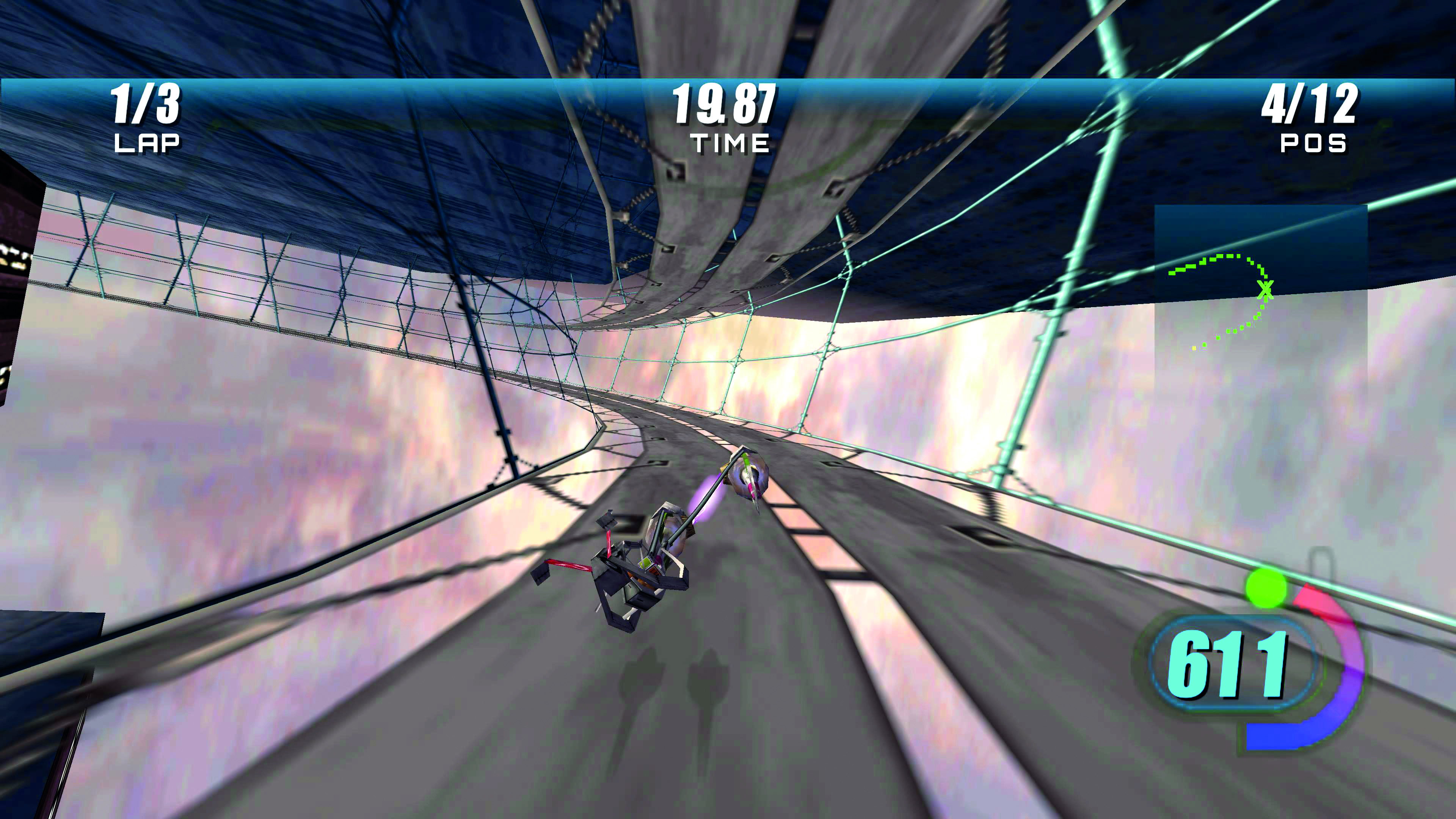
Midway through Episode I, ten whole minutes are devoted to podracing across the desert planet of Tatooine. Laden with CG, it may seem pedestrian today, but in 1999 and on the big screen it was a fast-paced thrill-ride like little else.
It’s no wonder the sequence directly inspired a game. PS1’s Star Wars Episode I: Racer took the zero-G chariot-like racing and sped off with it. Not only can you play as every racer in the sequence (including Ben Quadinaros, who never made it off the starting grid), but pods can be upgraded and customised using prize money. The Boonta Eve Classic from the movie is faithfully reproduced, and plenty of other planets and tracks are added to the mix.
Developed by LucasArts itself, Racer was produced concurrently with the sequence from the movie, meaning the team had to estimate based on minimal finished footage. Not only does the game have a real sense of speed, but the spindly, lightweight racers feel fragile, making every near-collision wince-worthy as you desperately try to keep your fast-moving pod together while avoiding overheating.
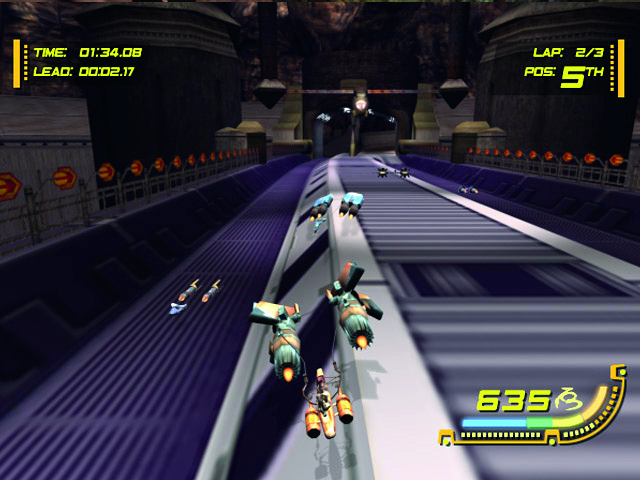
A sequel for the next-gen consoles eventually arrived in the shape of Star Wars: Racer Revenge. Development duties passed over to Rainbow Studios, which was known for muddy racers like ATV Offroad Fury. Set around the time of Episode II, it follows an older Anakin Skywalker as he butts heads with his childhood rival Sebulba once again. Serviceable, it fares badly in comparison to its predecessor – ironically, a focus on wrecking other racers makes the pods feel tankier, clumsier, and slower.
It’s hard to get too upset about Star Wars: Super Bombad Racing, developed by LucasLearning. A mediocre kart racer with simple circuits and power-ups to collect, in it you play as deformed, chibi versions of Episode I characters. Yoda’s in his hover chair, Darth Maul’s iconic crimson noggin is a show-stealer, and it’s nice to see Jar Jar respected too. It might not deserve the hate, but there’s a reason it’s forgettable.
PlayStation Star Wars games: fighting titles
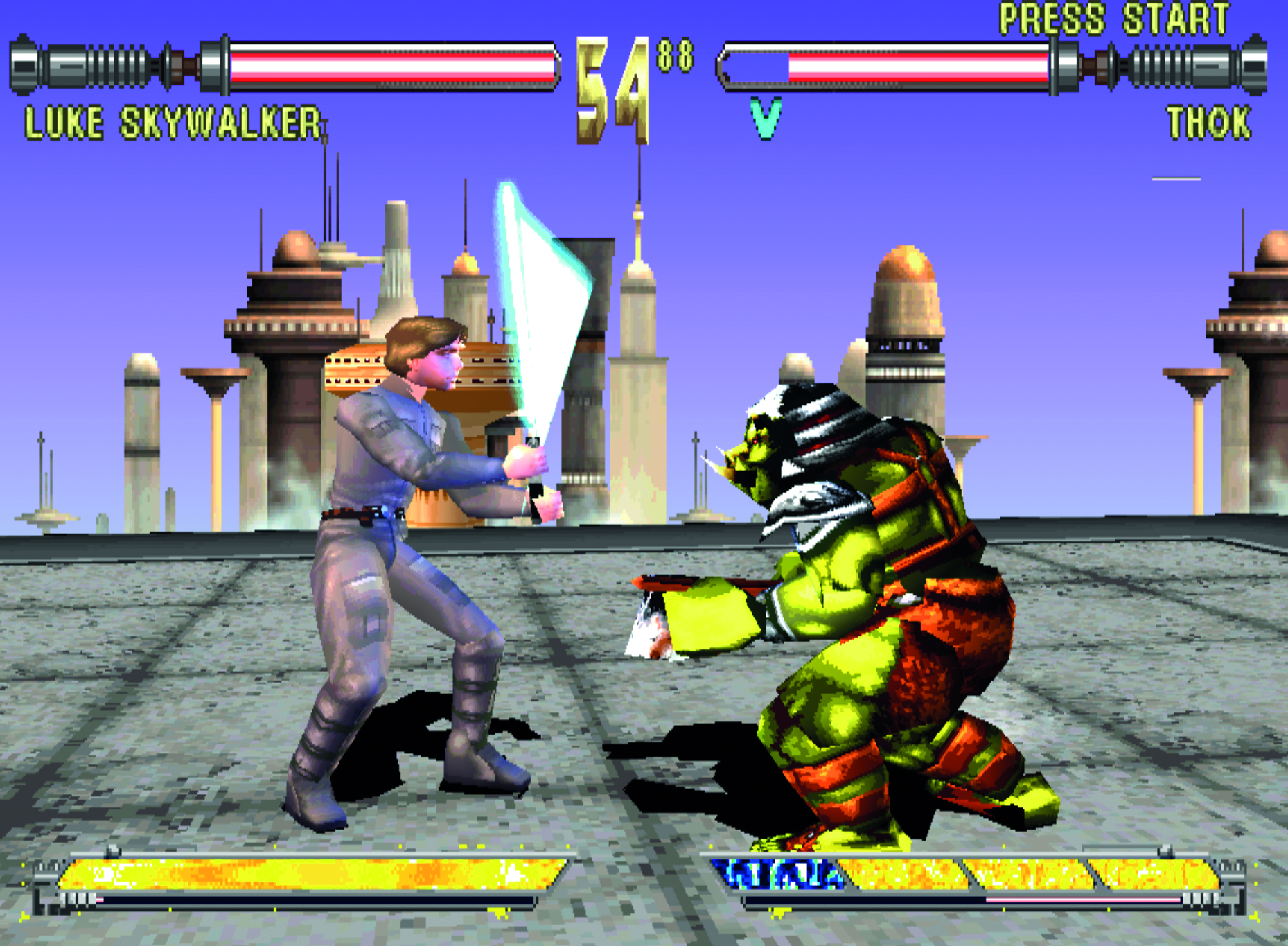
Star Wars: Masters Of Teräs Käsi isn’t viable as a competitive fighting game, but it’s fine to play with friends while eating pizza, the unfair moves and complete lack of balancing only adding to the hazy experience. Developed by LucasArts, ILM itself worked on the impressive motion capture… which results in sluggish bouts. Mixing weapons with hand-to-hand adds to the imbalance, but it is neat to activate Luke’s lightsaber. Based on the original trilogy, it also pulled from the Extended Universe, with Mara Jade, Luke’s love interest, even putting in an appearance.
Star Wars Episode I: Jedi Power Battles is as much co-op as it is competitive – though whoever bags the higher score for a level in this Golden-Axe-style side-scrolling brawler will feel smug nevertheless. Reimagining the events of Episode I as involving any combination of two Jedi (including Mace Windu with a blue lightsaber instead of his purple one, as he doesn’t use one until Episode II, released after this), you unlock combos as you go, fighting through starships and Naboo as you mow down droids. If it wasn’t for punishing platforming sequences this would be more fondly remembered.
Star Wars: Demolition, meanwhile, is a Twisted-Metal-style vehicle combat game that sees podracing banned, and Jabba The Hutt therefore devising an even more deadly sport, competitors including Aurra Sing on a swoop bike, Malakili on his rancor, and Boba Fett with his good ol’ jetpack.
PlayStation Star Wars games: VR entries
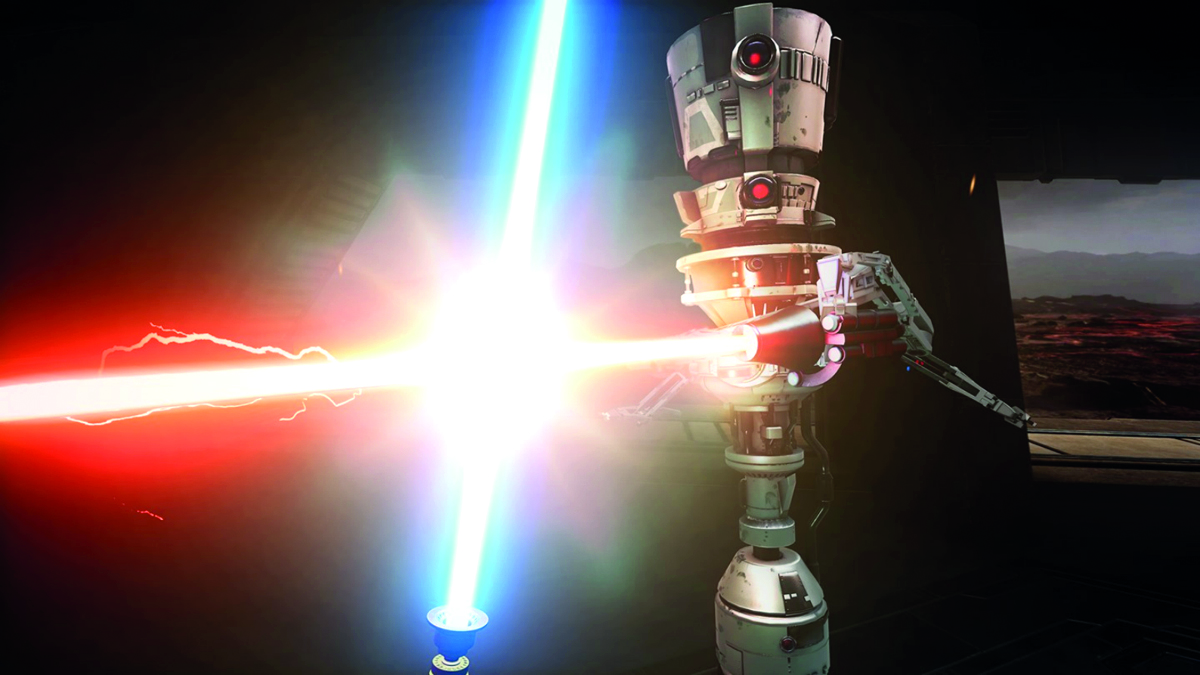
Since gamers could first waggle a motion controller, one idea has been constant: ‘What if this could be a lightsaber?’ The answer has, unfortunately, been: ‘It’d be fun for a bit.’ Vader Immortal was the first to give it a go, limited somewhat by the original PSVR hardware – its combat and movement can feel restrictive.
While getting up close and personal with Star Wars’ space-age tech is an appealing prospect, and exploring Mustafar’s temples an intriguing premise (you’ve been captured by Darth Vader some time after Episode III), waving the blade back and forth is just that: swooshing a laser sword around without much consequence. Shooting enemies with a blaster is somewhat more effective, as is using your force powers [Speaking of which – check out our Synapse on PSVR2 review if you fancy some extremely satisfying telekinetic combat].
Thankfully, these notes had been taken on board by the time Star Wars: Tales From The Galaxy’s Edge landed in the next-gen VR spaceport for PSVR2’s launch. This time round you’re a scoundrel who’s crash-landed on Batuu (the Disney Parks’ original setting making a rare appearance), shooting guns your primary mode of interaction. And the combat is excellent; strapping the guns to your waist and shoulders adds some great physicality, as does using your toolkit to hack doors and fix problems. Read our our interview with the Star Wars: Tales From The Galaxy’s Edge artists for more insights.
It is let down only by the very short Jedi chapters that once again feel too weightless to really properly emulate lightsaber combat – after all, who needs lightsaber stances when you can just twirl away to decimate everything in front of you? Translating Star Wars into VR isn’t as straightforward as you might think, but getting the chance to be fully immersed in this galaxy is worth it.
PlayStation Star Wars games: expanded universe

Kyle Katarn. To many, the name of this recurring Star Wars character will mean absolutely nothing. But those who were fans of the expanded universe in the ’90s and ’00s will gladly raise their glass of Chandrilan squig in reverence.
Sauntering around the galaxy like the creation of a TTRPG player who’s completely unchecked by their game master, Kyle Katarn is a no-nonsense former Imperial soldier who became one of the best mercenaries in the business. He helped obtain the Death Star launch plans. He infiltrated Jabba The Hutt’s palace. Oh, and he is secretly force-sensitive and can use a lightsaber. And he’s best friends with Luke Skywalker. And also the Jedi Master of Mara Jade, Luke’s eventual wife. Suffice to say, Kyle’s adventures have been non-canon since the Disney buyout (basically everything before 2012 is now considered ‘Legends’ material – often for good reason).
At any rate, Kyle has led quite the life, making even the games he’s starred in hard to pin down as they span multiple genres. Naturally, the bearded heartbreaker has also starred in numerous novels, and even tabletop roleplaying games.

But Kyle’s tale begins in Star Wars: Dark Forces on PS1, developed by LucasArts (and remastered recently by Nightdive Studios). An FPS, it takes a lot of cues from Doom, from its rudimentary 3D maps with 2D sprites to Kyle’s head-bobbing as he dashes about the stages and fires from the hip.
These stages can get quite detailed – sometimes infuriatingly so as you struggle to find where to go next – and offer a variety of objectives beyond simply blasting everything as you make your way from A to B. Sometimes you need to secure an item and then extract back at Kyle’s ship. Another mission has you crawling through sewers and flicking switches to track down an arms dealer in hiding. There’s loads of verticality that you’re able to engage with (like jumping across tricky cliff-faces), giving the game a bit more dynamism than Doom, though more potential to frustrate.
The Star Wars theming fits naturally into the FPS format. Stormtroopers cut the kind of figure you can’t resist blasting at, and the Star Wars universe has plenty of futuristic guns and bombs that are fun to get destructive with – including the Stormtroopers’ own blaster rifles which, as you might expect, have terrible accuracy.
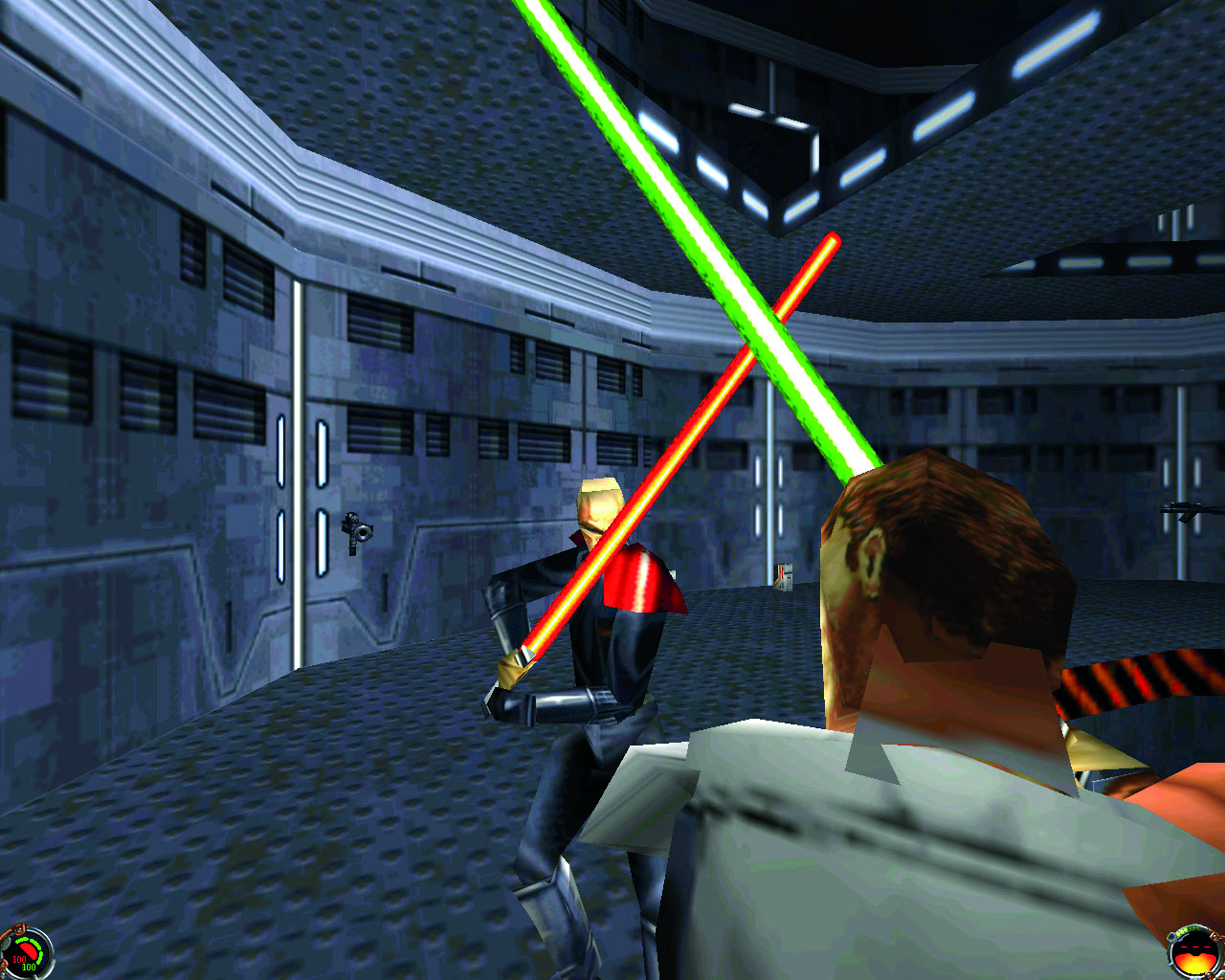
Currently unreleased on PlayStation, LucasArts’ direct followup, Star Wars Jedi Knight: Dark Forces II, moved the series to full 3D and had Kyle discover his secret Jedi heritage. Nabbing a lightsaber, here he mixes both FPS-style blasting and ’saber twirling by the game’s end.
By the time Raven Software came on board to continue Kyle’s adventures, though, he’d done away with the Jedi thing, returning to his merc ways for Star Wars Jedi Knight II: Jedi Outcast’s opening. Raven already had plenty of FPS experience, having developed Hexen and Soldier Of Fortune, and the beginning of Jedi Outcast plays out much like a Dark Forces III would, with better 3D making the maps you blast through feel like more realised spaces (with the option to explore in third-person too if you want).
But before too long Kyle meets up with Luke Skywalker in his post-Episode VI Jedi academy and embraces the force once more. Meaning more lightsaber swinging. More built-out than in Dark Forces II, the combination of shooting and slashing here results in a really unique adventure, and it’s able to support a rather fun lightsaber-clashing multiplayer mode.
The most in-depth lightsaber combat of any game to date
Kyle takes a back seat in the followup, Star Wars Jedi Knight: Jedi Academy. Building on Jedi Outcast’s customisation modes in multiplayer, here your own Jedi-to-be fronts the campaign, being taught by Jedi Master Kyle Katarn as a student at Luke’s academy. As you progress you can choose how to evolve your force powers, tweak your lightsaber, and even learn new saber-fighting stances (important to any expanded universe mega-fan) – including specialising as a staff-user or dual-wielder at the end of the game. It’s fun to carve your own place into the galaxy-spanning Star Wars story, but with perhaps the most in-depth lightsaber combat of any game to date the campaign also serves as onboarding for a deep multiplayer mode.
Given his decanonisation, it’s unlikely we’ll see much of Kyle in future. But that doesn’t stop those who remember his games from hoping. Star Wars Outlaws character Jaylen Vrax bears such a striking resemblance to Kyle (as portrayed by actor Jason Court in FMVs) that fans were briefly convinced Kyle was coming back. Time will tell – if you strike him down now, Kyle will only become more powerful than you can possibly imagine.
PlayStation Star Wars games: online shooters

Given the second word in ‘Star Wars’, games focussing on the large-scale conflicts in the movies were bound to be developed sooner or later. Rather than centring on big-name heroes and villains, Star Wars: Battlefront puts everyday soldiers to the fore.
Taking what it had learned from developing Episode II tie-in The Clone Wars, Pandemic Studios did away with segmented, vehicle-based missions to instead imagine conflicts as more all-encompassing experiences on focussed maps, mixing soldier classes and vehicles. And it was all geared around multiplayer, powered by the relatively new PS2 Network Adapter.
Very impressive for 2004, the simple shooting was almost a benefit, making it easier for anyone to hop in and play. Released about a year before Episode III, the Clone Wars side of the campaign was limited; the Galactic Civil War (the original trilogy) was the source of more of the ground battles. The action’s built around capturing control points that double as soldier and vehicle respawns, and victory is achieved by running enemy respawns down to zero or capturing every point, giving you ample reason to explore each map. The campaign strings the maps together, though is essentially a sequence of offline battles.
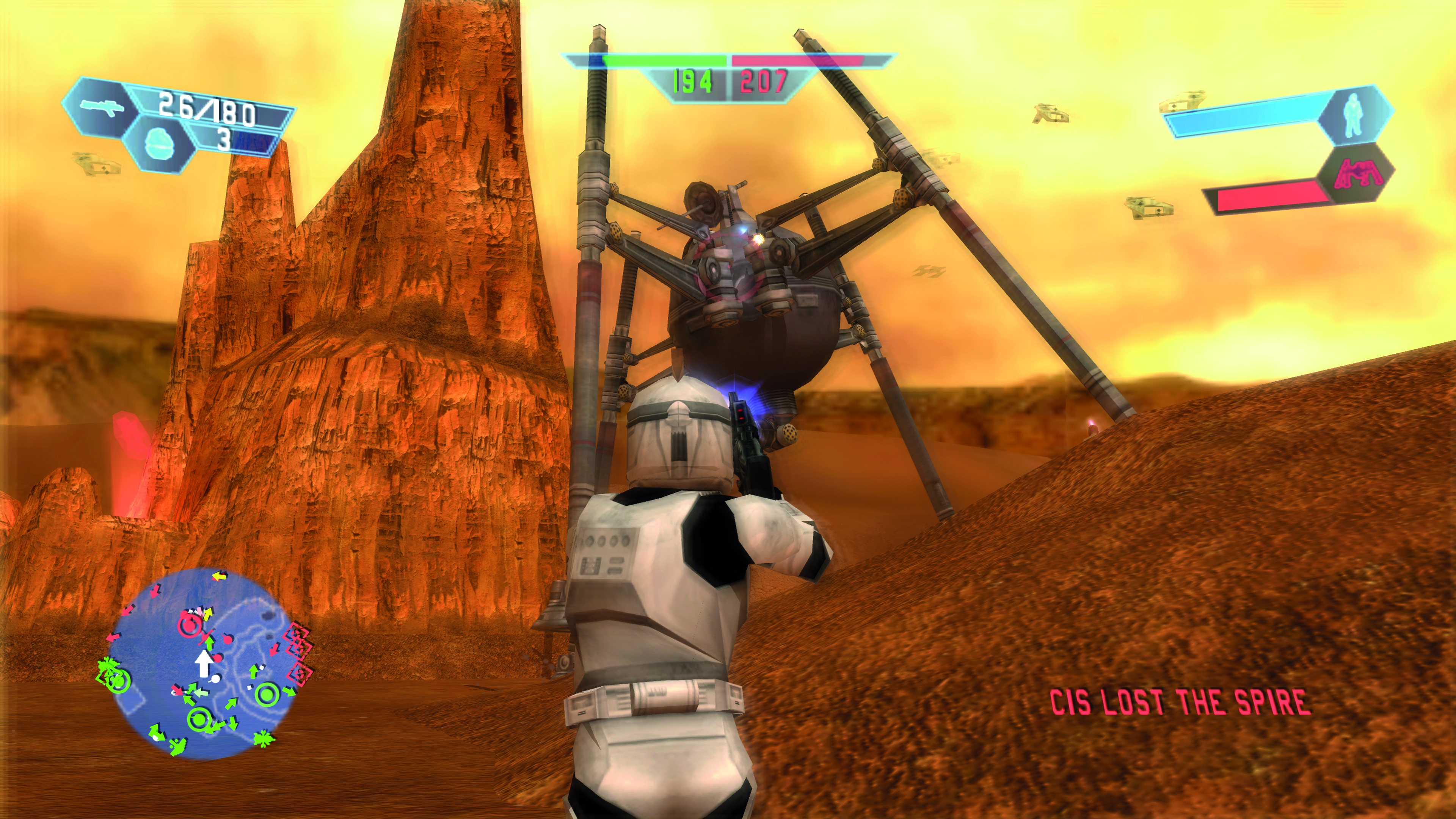
That’s not true of the sequel, Star Wars: Battlefront II, which improved on pretty much every aspect of the original. Released just over a year after the first game, it feels immediately better to play, with smoother movement and easier aiming. It’s almost a revised draft of the original. You can play as named characters like Boba Fett or Anakin Skywalker in special circumstances rather than just seeing them on the field as NPCs. Space battles are added (though they are a little clunky to play).
There are more maps, and they’re more intricate. The campaign even features unique objectives, with a storyline narrated by Temuera Morrison (Jango Fett in the movies), diving into the complexity of the clone army. (Set before The Clone Wars cartoon show, this darker tale posited that the Clones always knew they were to betray the Jedi, rather than being compelled to by a mind control chip as they are in the current canon.) Released just after Episode III hit cinemas, it charts the rise of the Empire, including extra story to connect Episode III and IV.
Rebellion Games took over the series from there, and had much longer to cook up two PSP-exclusive sequels
The PSP version of Battlefront II was handled by Savage Entertainment. Released within the first year of the handheld’s life, it’s an admirable attempt to transfer the game to the smaller device, though rather clunky, with a simplistic campaign and camera controls on the face buttons.
Rebellion Games took over the series from there, and had much longer to cook up two PSP-exclusive sequels: Star Wars Battlefront: Renegade Squadron and Elite Squadron. Using a smart lock-on system that heavily controlled the camera, these were much easier to play. They also featured the ability to customise loadouts rather than having distinct classes, and Elite Squadron allowed you to transition from ground to space maps in a single mission. Impressive for a handheld series.
Their campaigns are particularly ambitious. The former tells the story of the titular Renegade Squadron, a kind of black ops rebel unit set up by Han Solo and under the command of Col Serra, which handles particularly dirty work. The latter centres on special clones X1 and X2 and how the rise of the Empire means they fight on opposite sides of the war as they come to terms with their unusual force sensitivity. Considering each game’s story is only a few hours long, there’s a lot packed in (maybe too much, truth be told).
The switch to handheld wasn’t part of some grand scheme to go beyond consoles. Few series have had more titles cancelled during development. There’s concept art for Battlefronts III and IV floating around online. Some of III’s features are said to have made it into Elite Squadron; IV, meanwhile, was supposedly a ‘what if’ story, depicting the Jedi as dark-sided Sith, with redeemed interpretations of villains. The rumoured Battlefront Online met a similar fate. A series with ideas as big as its battles, it wasn’t to be.
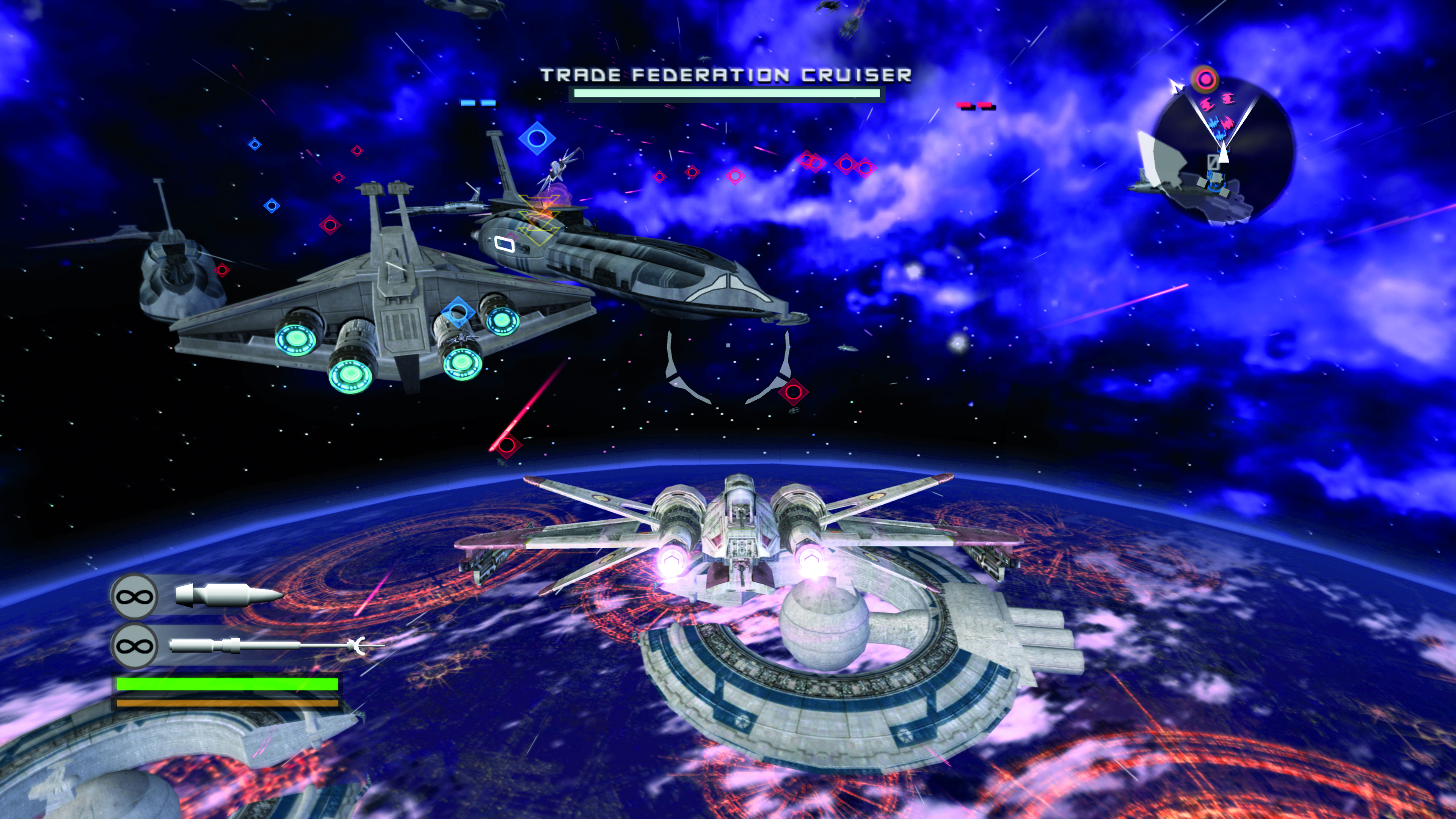
While sometimes less is more, sometimes less is just less. Which was the problem when Star Wars Battlefront finally returned to big consoles in 2015. The reboot was developed by Battlefield dev EA DICE; one of those perfect marriages of studio and licence. What’s here is mostly great: supremely detailed renditions of Star Wars locations and models with controls so simple that anyone can jump into a skirmish.
But what’s noticeable here is what isn’t present. There’s only a handful of maps and locations, almost all drawn from the original trilogy (plus Jakku, to tie in with Episode VI, released the same year). Later a few more were added via DLC (such as Scarif, to tie in with Rogue One). The absence of prequel trilogy content – most notably anything to do with the Clone Wars – was obvious, and disappointing.
The modes are also pretty basic. Supremacy is control-point-based, like in the original games, but more linear in structure, making it closer to Battlefield’s own Conquest modes. While some modes are inventive, like the humorously unbalanced Walker Assault On Hoth and Heroes V Villains mode (which built out Battlefront II’s fan-favourite Mos-Eisley-set mode into a smaller-scale deathmatch with named characters), overall the game lacks the ambition of the earlier titles. With no campaign to speak of, and no space battles (outside of a VR mode added in 2016), it didn’t really come together.
And then sometimes more is more. It’s almost uncanny how similar the relationship between the rebooted Battlefront and its sequel is to the one between the original pair, as EA DICE’s followup, Star Wars Battlefront II, added a proper campaign, space battles, and other improvements.
But like the Death Star, Battlefront II had a fatal flaw: an over-reliance on microtransactions that made players feel exploited at launch, resulting in an intense, and somewhat deserved, backlash. (Current versions have done away with this; it was stripped out of the Celebration rerelease in 2019, which gave you everything out of the box plus Episode IX content.)
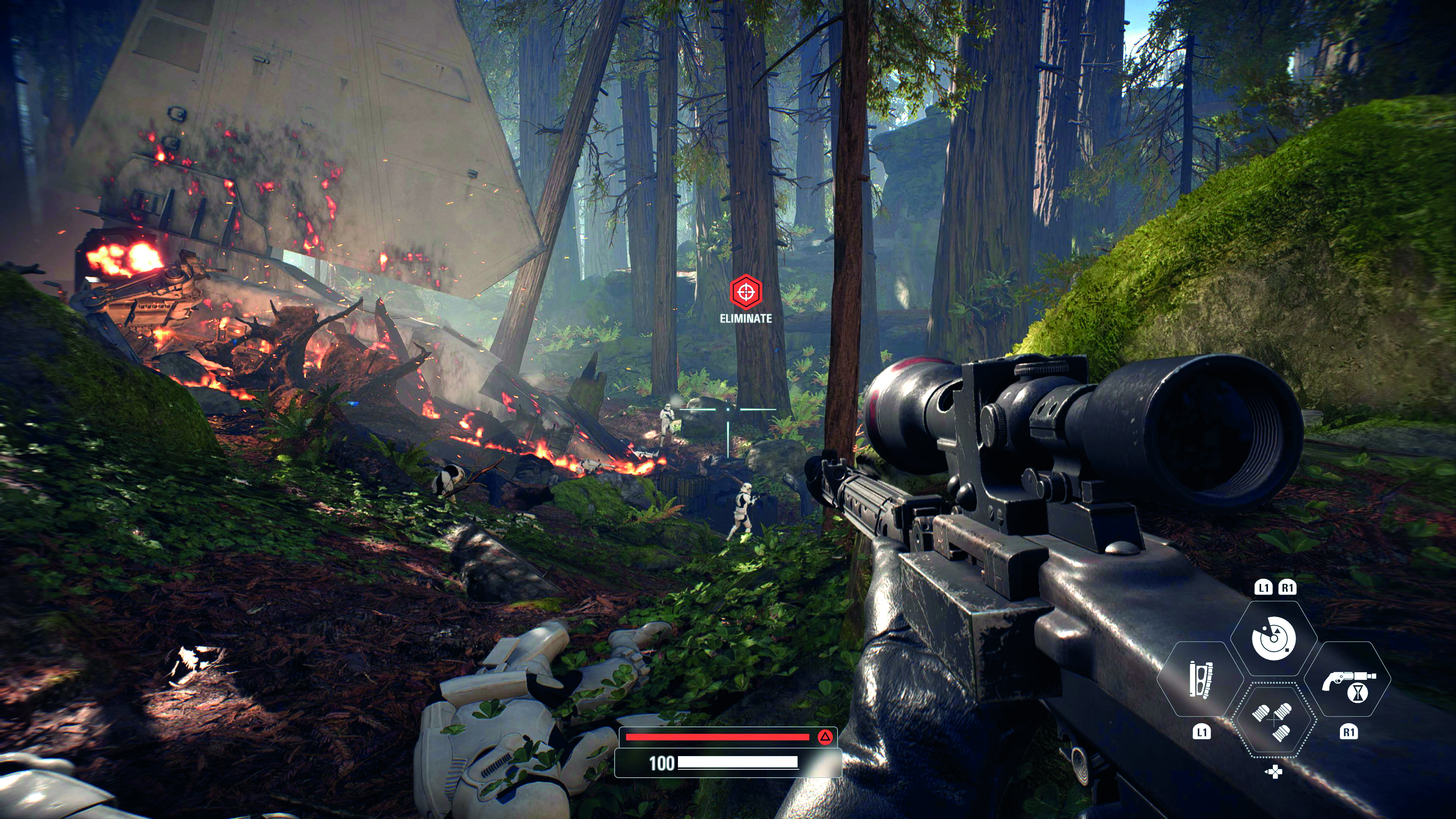
Returning modes felt better than ever, especially spread out across more locations. Space battles joined the fray. Galactic Assault made for bigger battles that progressed based on each team’s performance in prior rounds. Playful extra modes included Ewok Hunt, in which a squad of Stormtroopers try to extract from Endor, unable to see into the night, while a team of cuddly killers mercilessly traps them under cover of darkness.
The campaign, meanwhile, bridges the gap between Episodes VI and VII, following the Empire’s Inferno Squad as the Emperor falls and they become disillusioned with the cause they were fighting for, all while briefly meeting characters like Luke Skywalker and Princess Leia. Taking cues from the game’s main game modes, it perhaps sometimes feels more like a nod to Kyle Katarn’s FPS adventures than a single-player Battlefront. But it’s still a rollicking space adventure. Factor in some of the best war fighting on console, and a community still playing, and it’s time to put aside the rocky launch that undermined Battlefront II’s reputation and join the fight.
PlayStation Star Wars games: dogfighting
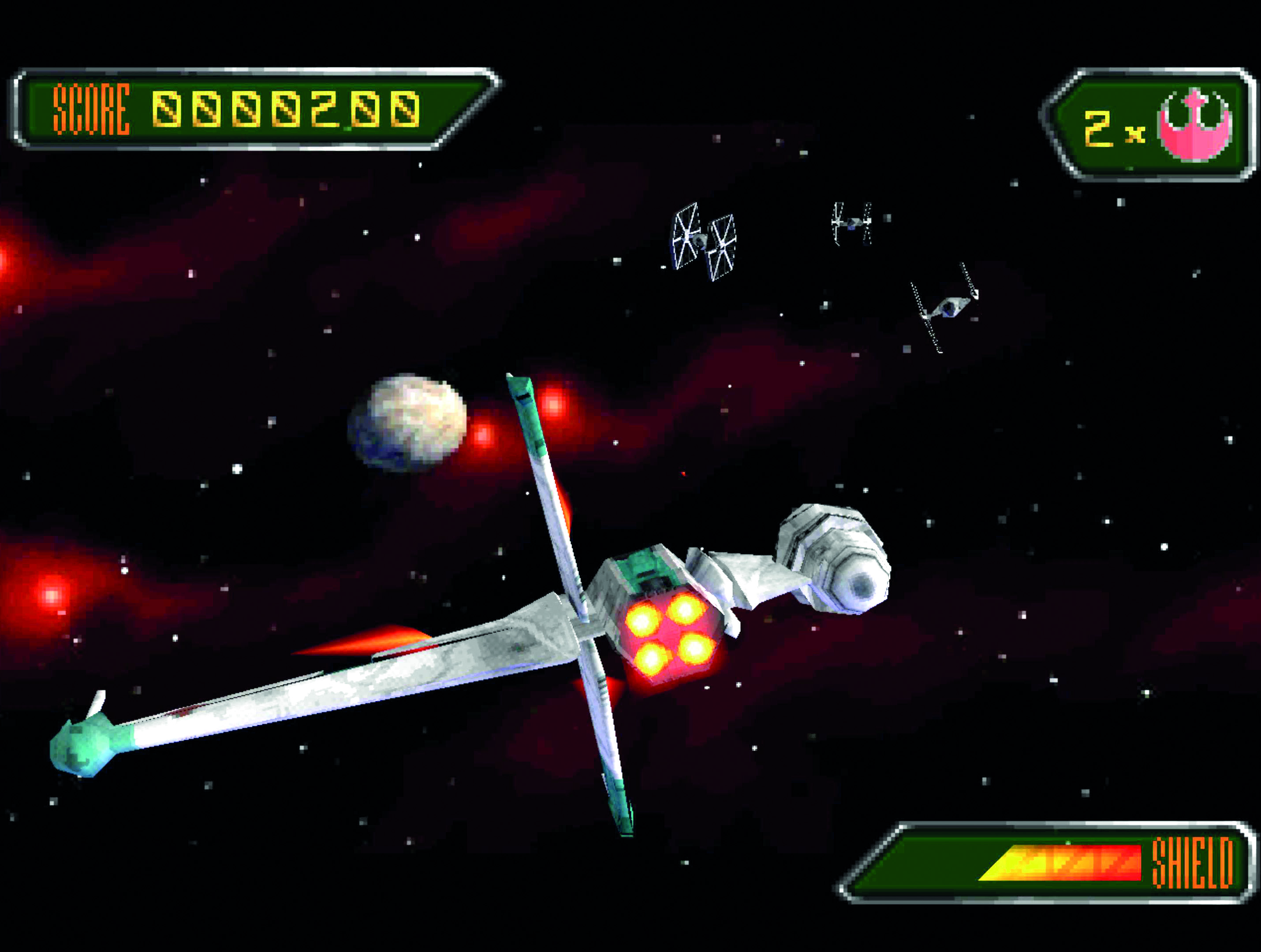
Jumping into a spaceship, whether that’s a little fighter or a massive battleship, has always been at the heart of Star Wars. Even Vader himself was once “the best star pilot in the galaxy.” While that means it’s a part of the Star Wars universe always ready for takeoff, the approach developers have taken has been incredibly varied over the years.
Back on PS1, with Star Wars: Rebel Assault II: The Hidden Empire, the developers’ goal was to bring the movies to life in as much detail as possible via an on-rails shooter. Developed by LucasArts and ported by Factor 5 (which would go on to work on Nintendo’s Rogue Squadron games), it used PS1’s CD technology to stuff two discs with live-action, blue-screened FMV cutscenes employing plenty of Hollywood talent. Brutally hard, it mixes in-ship combat (where you can swap between first- and third-person views on the fly) with following the actors onto ships for cover-based shootouts.
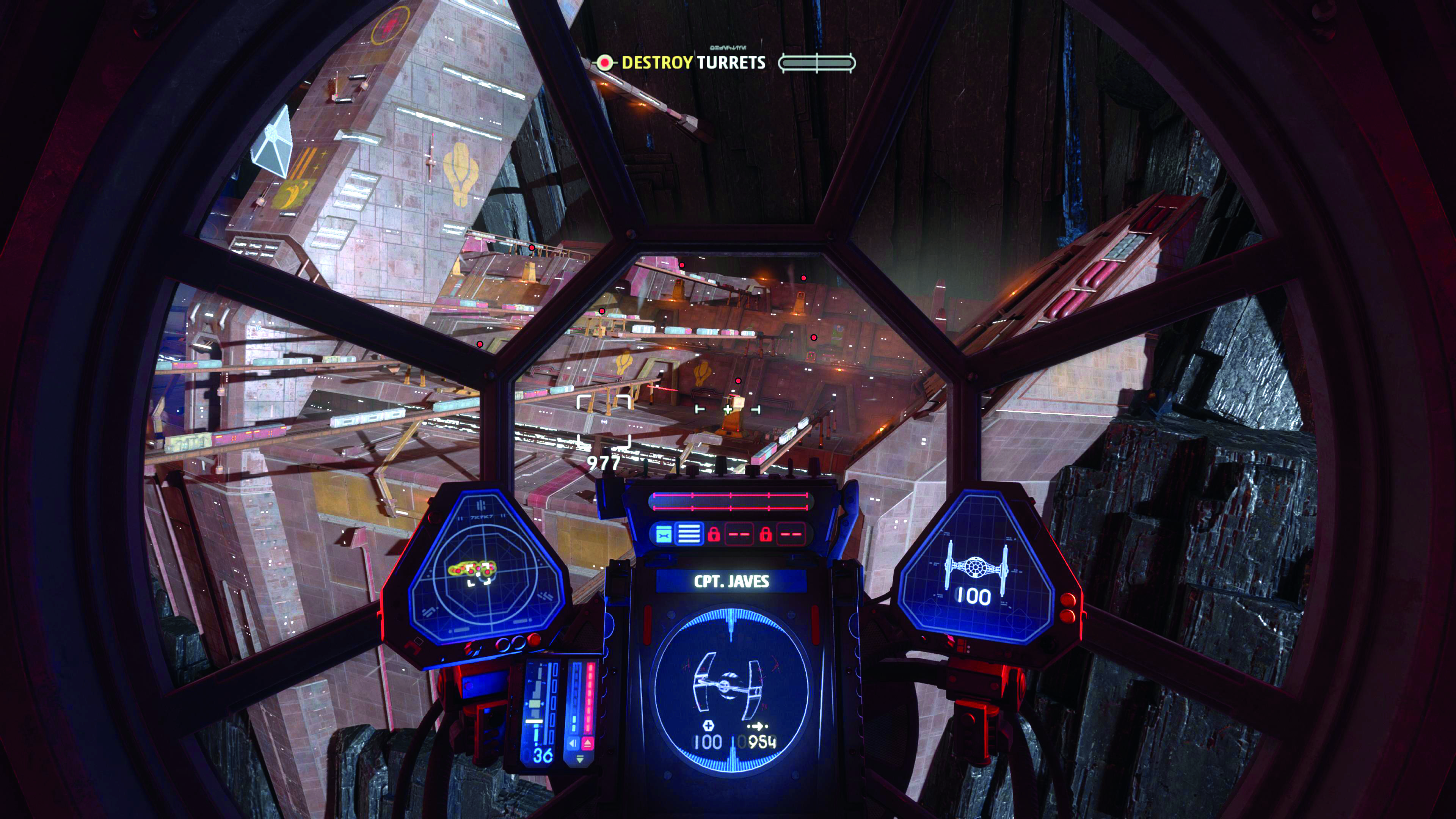
A few years after that game, and following the release of Episode I, the sleek new starships and battle at the end of that movie inspired LucasArts’ Star Wars: Starfighter, a first- or third-person arcade shooter that has you piloting one of three ships as you uncover the conspiracy that leads to the events of the movie. Star Wars: Jedi Starfighter was a direct sequel, introducing Adi Gallia, who’d featured briefly as a member of the Jedi Council in Episode I, as a pilot who could use force powers while flying, like chaining lighting between enemy fighters.
Star Wars: Squadrons, meanwhile, from EA ‘Dead Space’ Motive, is all about flying in first person, tactically managing your fighters’ power to boost your shields and weapons at the right moment, teasing the thrusters to just the right speed to either outmanoeuvre or outrun your opponents. While multiplayer dogfights are a focus, a tense campaign teaches you how to fly – all with the option to use PSVR to get into the ship yourself. (We’re still desperate for a PSVR2 version.)
PlayStation Star Wars games: anti-heroes
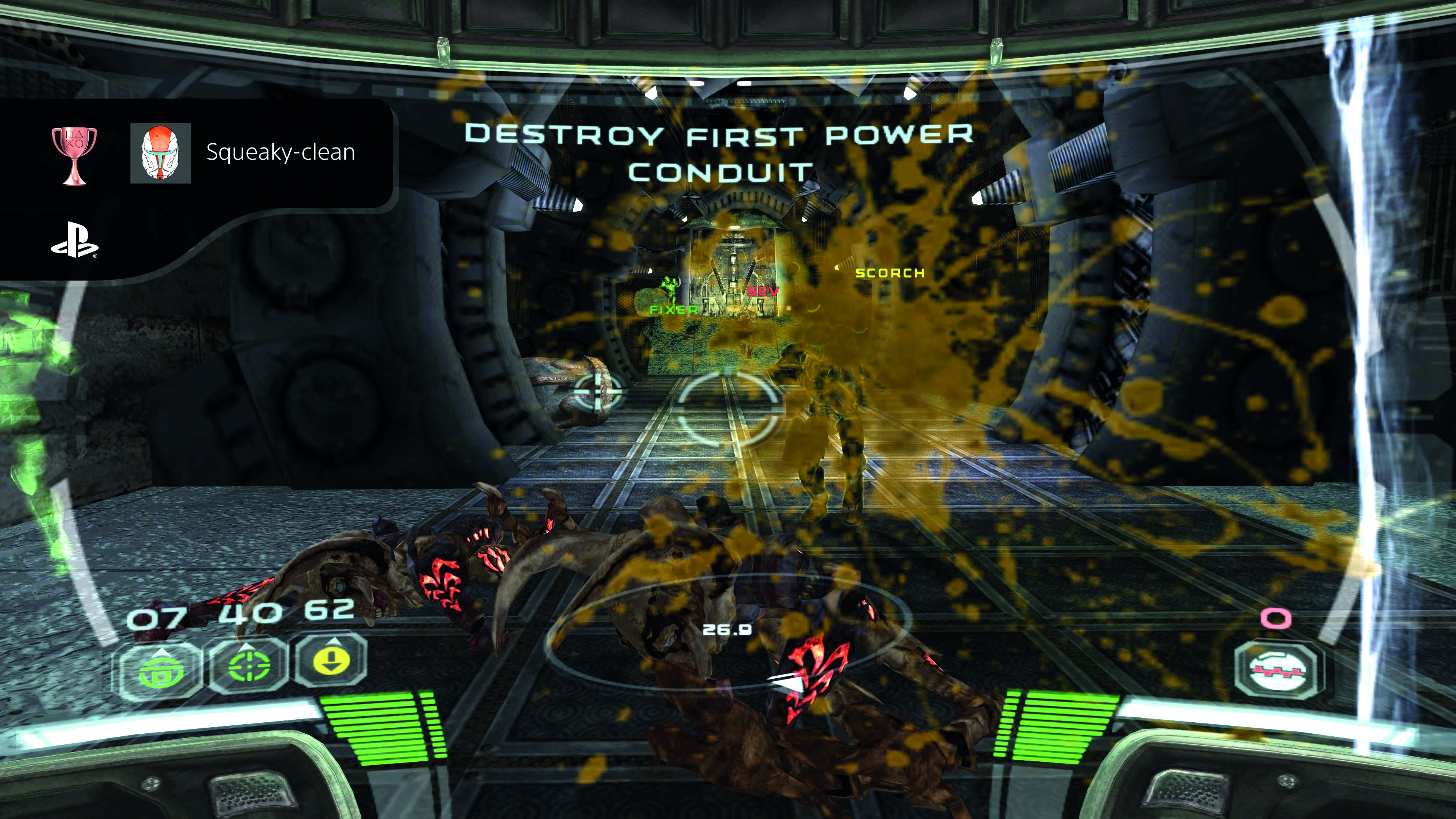
Seven seasons of children’s television prove that the gap between Episode II and Episode III is prime ground for storytelling. The Clone Wars, originally referenced in the very first movie to be released, take place at this point.
When civil war breaks out between the Republic and the Separatists, the Jedi are given an army of clone troopers (based on Jango Fett’s DNA), apparently created in secret by the missing Jedi master Sifo-Dyas. But it’s a perfect example of dramatic irony: as this all takes place within the same time frame as the prequel films, we know this conflict is actually a false flag proxy war devised by Darth Sidious in order to assume complete fascist control by forcing the Jedi to compromise on their pacifist beliefs while simultaneously creating a state of fear in the Republic.
Star Wars: Republic Commando takes place in the thick of the fighting, eschewing the cartoon style of the TV show that later came to define the period in favour of something grittier and much closer to the likes of Halo or Gears Of War. And it has the chunky shooting to match. Seeing the action through a clone’s visor, you’re immersed in the action as you blast through bug-like Geonosians and droids alike. As Delta Squad leader Boss, you’re joined by Scorch, Fixer, and Sev, who you can tactically order around, each with their own specialities. It all works surprisingly well, the focus on boots-on-the-ground action giving a fresh perspective on the Jedi, who are usually viewed in a more generous light.
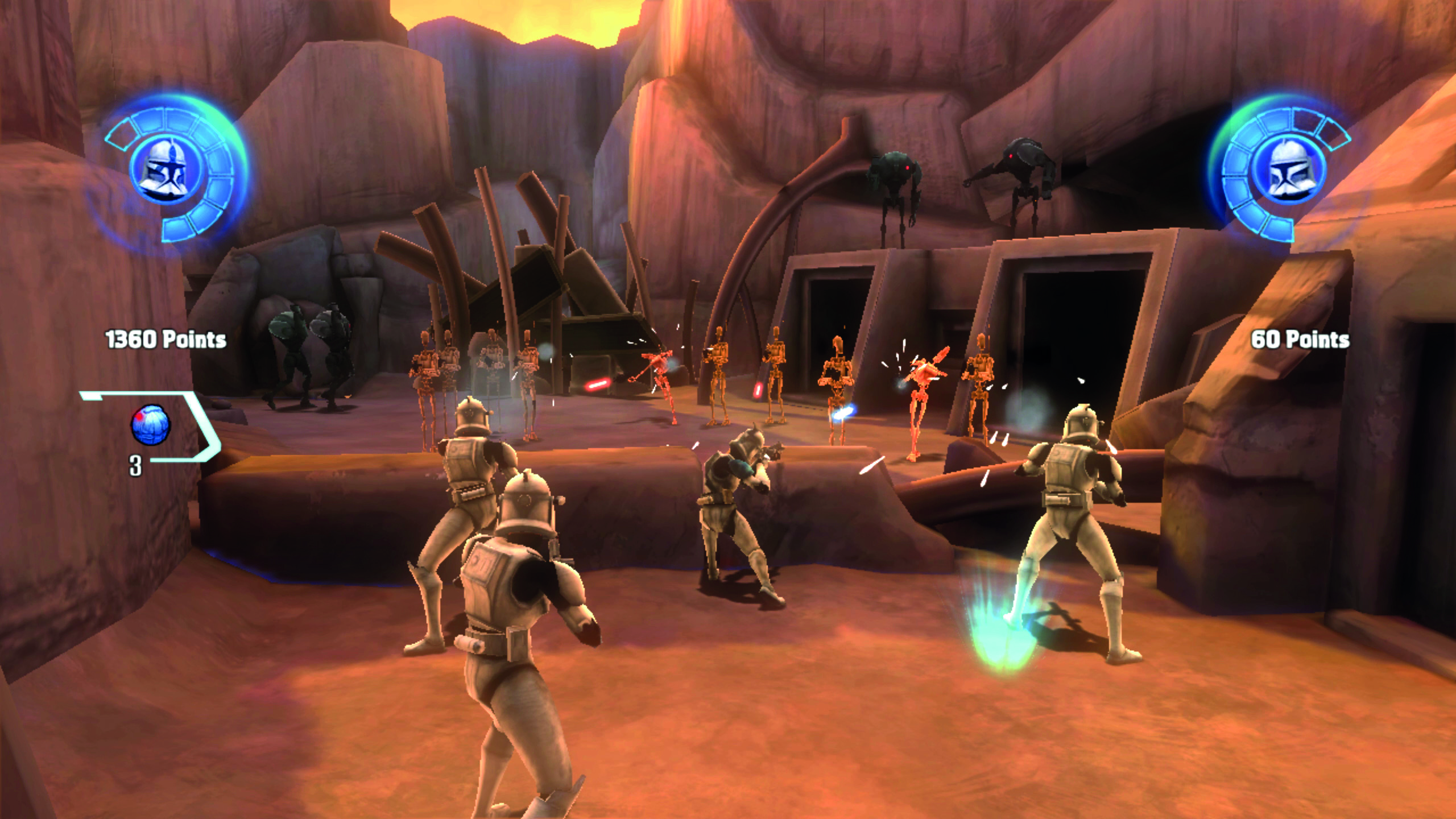
Star Wars: The Clone Wars – Republic Heroes is based directly on the TV series, meaning it’s aimed at a younger audience. Developed by Krome Studios right after its excellent take on The Force Unleashed for PS2, this feels similarly snappy to play while offering simpler Jedi combat. Playable in co-op, it’s split between Jedi sections, which involve more platforming, and Clone ones, which are twin-stick shooters. Plus, you can’t not find Yoda earnestly teaching you about double jumps and grenades funny. The only downside is that the excellent art style of the cartoon – perfectly suited to games – is ruined here by heavy use of the PS3-era bloom lighting.
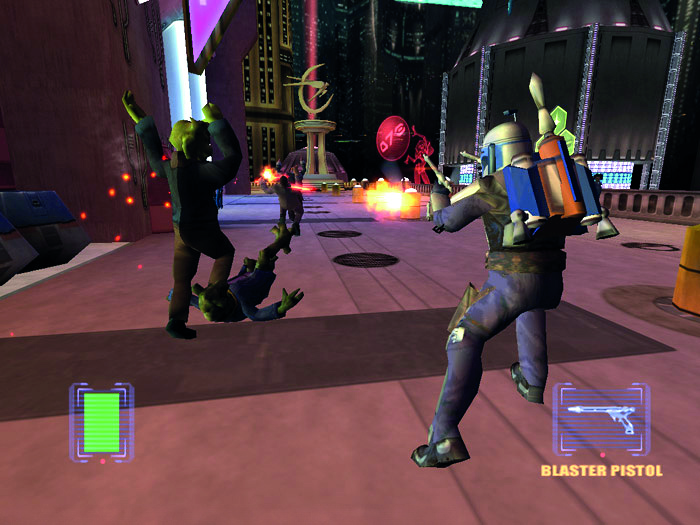
Not every gamer dreams of being a clean-cut Jedi Master. For many, the underbelly of Star Wars’ galaxy holds just as much appeal, from the shady characters at the Mos Eisley cantina to the criss-crossing industrial corridors of the undercity of Coruscant, capital of the Republic.
The LucasArts-developed Star Wars: Bounty Hunter, centring on Jango Fett, brought us into that world. The Mandalorian-armour-clad bounty hunter was the new Boba Fett, by virtue of being the original Boba Fett (he’s his dad, and featured heavily in Episode II, which was released at around the same time). Level-based, this has you blasting and sometimes jumping around levels while clunkily switching between various gadgets, including a scanner to see if someone has a bounty on their head. You also get a little whip-cord to tie them up with. A Star Wars: Bounty Hunter remaster is due this month.
In Star Wars: Lethal Alliance, on the other hand, you play as Twi’lek merc Rianna Saren, who teams up with droid Zeeo to complete missions for the Rebel Alliance (which are assigned by Kyle Katarn – yes, him). Developed by Ubisoft Montreal pre-Assassin’s Creed (the studio had worked on other Star Wars handheld releases for Nintendo), this is a perfectly fine PSP adventure that’s mostly about blasting your way through levels and making some clunky jumps (and sometimes zooming around on Zeeo). We reckon Star Wars games could use a little more scum and villainy… so it’s a good thing Star Wars Outlaws is on the way.
PlayStation Star Wars games: the villains
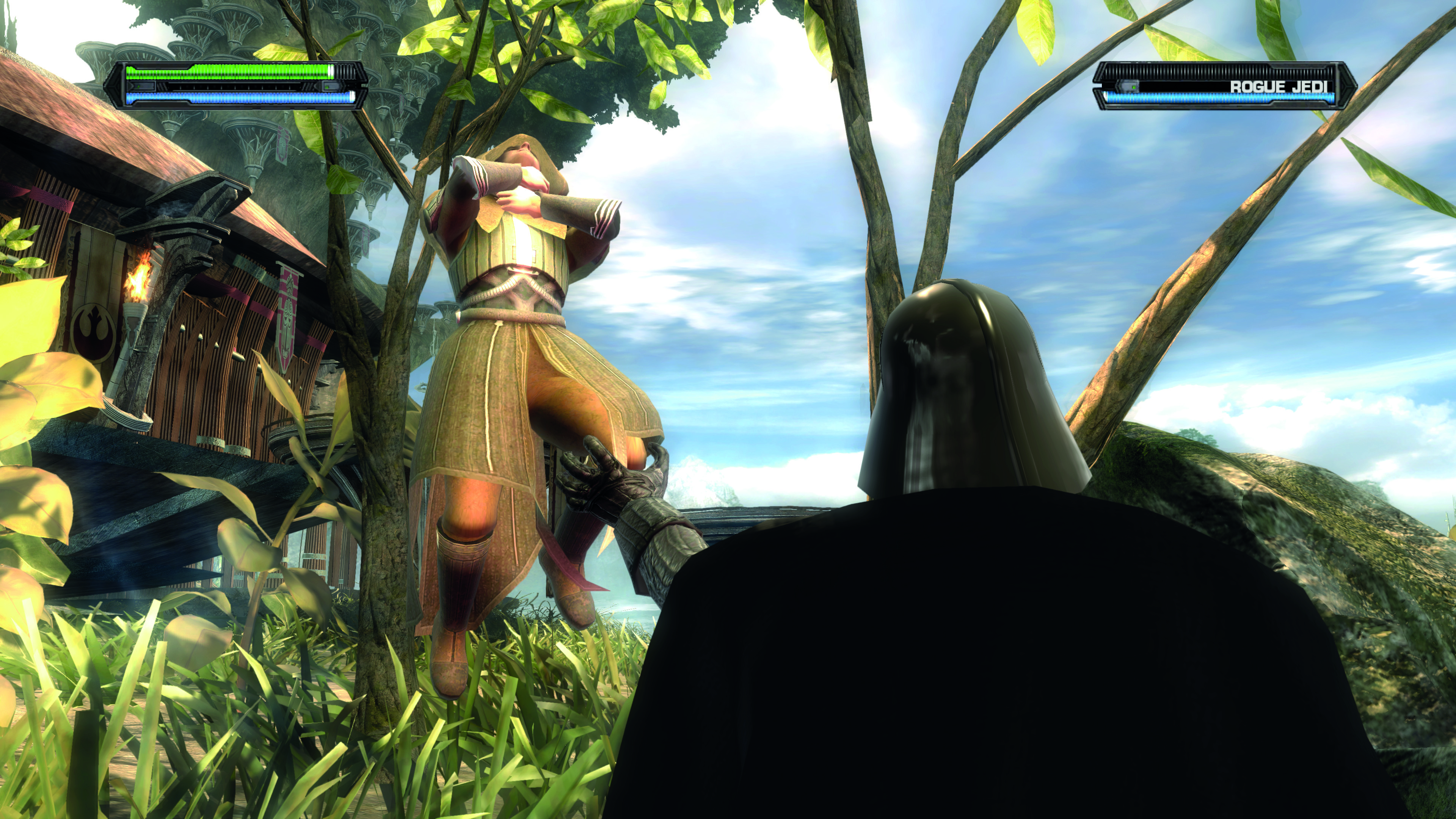
Aren’t you tired of being nice? Don’t you just want to go bantha-[blorp!]?’ is what we imagine was circled several times on the pitch-board for Star Wars: The Force Unleashed. Before we get into the story and game design, let's first give space for the tech LucasFilm harnessed to bring Force powers to life, including Pixelux Entertainment's Digital Molecular Matter for generating dynamically destructible objects and extensive use of Havok for ridged body physics.
This duology is all about using the force and a lightsaber to mess up your foes in increasingly over-the-top fashion. But who are your enemies? Basically, everyone. It all takes place during the Jedi hunts after Episode III, when you – portrayed by Sam Witwer – are stripped of your name and known only as Starkiller or The Apprentice, having been indoctrinated by Darth Vader to the dark side in such secrecy that when you’re air-dropped in to carry out his secret missions you take no side, dispatching rebels and Empire supporters alike.
The Force Unleashed begins with Starkiller completing his training by hunting down several Jedi across different worlds (including Shaak Ti, who was killed off in a deleted scene from Episode III – unlucky). When Vader’s plot to use you to help him usurp the Emperor goes sideways you’re cast out on your own, tasked with helping to assemble the Rebel Alliance that would set the events of Episode IV, the very first film, into motion. Whether Starkiller carries this out in order to genuinely turn over a new leaf and embrace the light side or simply to sow chaos against the Emperor that Darth Vader can leverage is the conflict at the heart of the game (and yes, there are two different endings).
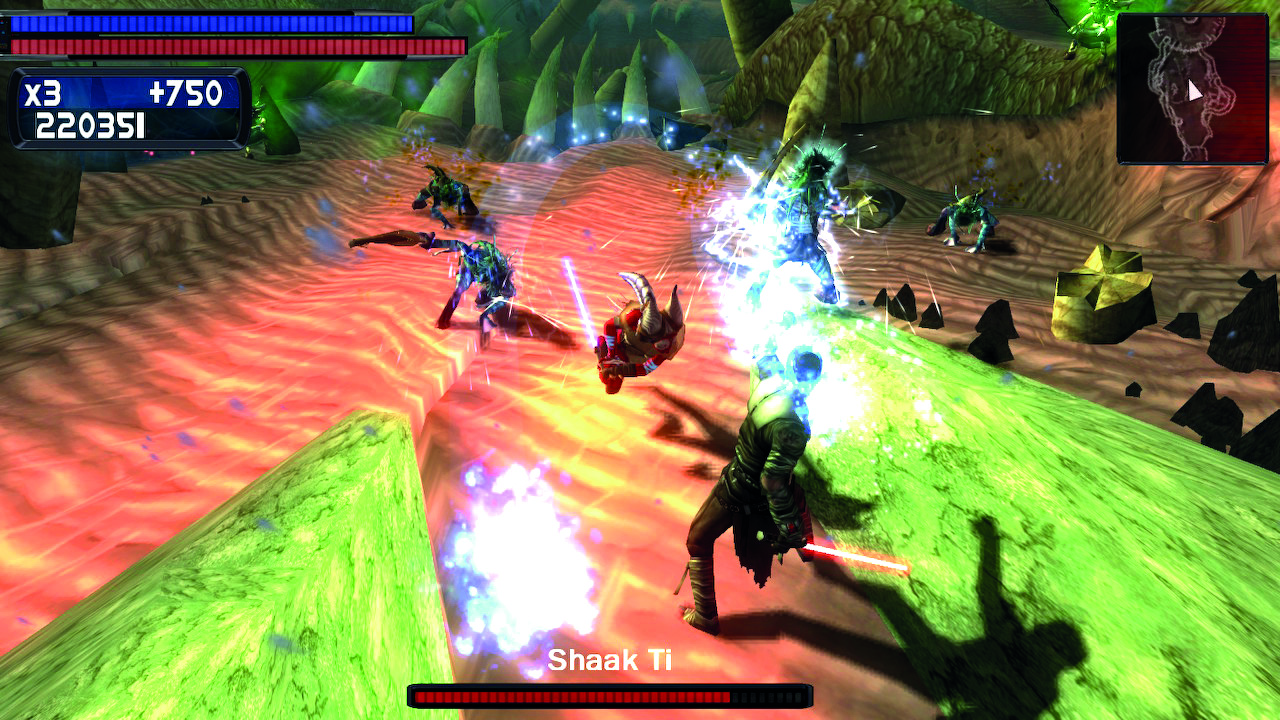
This first game, released in the waning years of PS2, actually comes in two completely different versions, one for the ageing console and one taking advantage of all the tech in the shiny new PS3. They share a storyline, characters and voicelines, and feature the same planets, but have unique level layouts and different (though similar) hack-and-slash combat systems.
LucasArts itself developed the ‘next-gen’ version, and it looked gorgeous for the time. With an opening that puts you in control of Darth Vader tearing up the wookiee home planet of Kashyyyk, it gives you a taste of the range of powers you’ll have to unlock as Starkiller – holding enemies in place and then stabbing them with a lightsaber, force choking enemies as they run at you, using force push to send wookiees ragdolling off treetop bridges, and letting that lightsaber swing. Brutal stuff, though not particularly gory, the appeal lies more in watching things tumble. Unfortunately that extends to Starkiller, who can all too easily become stun-locked when pushed around.
Starkiller’s powers develop beyond this, eventually including force lightning and more. Easily accessed on the face buttons, unlockable combos enable you to compound your powers to perform special actions, like juicing up your final lightsaber strike with a bit of evil lightning or force pushing away someone you were grabbing. Light puzzle-solving mechanics, often revolving around removing obstructions from your path, break up the levels.
But for the most part you’re here to batter whatever moves until it stops moving, and to keep doing it until you reach your target, which becomes a more involved boss fight with some set-piece elements. Like the Episode III tie-in game, The Force Unleashed very much feels like it’s living in God Of War’s shadow, and the cinematic-style QTE clashes are here to prove it. But it’s all done with a Star Wars flavour; it’s good fun to see Starkiller and his opponent flipping around and leaping off surfaces. DLC for the game even provided some fun ‘what if’ sequences, such as having Starkiller face down Luke Skywalker on Hoth.
The ‘last-gen’ PS2 version, developed by Krome Studios, was impressive, especially in the way it still committed to having plenty of physics objects to send tumbling around the stage. As you’d expect, given the limitations of the hardware, it’s a bit simpler in design, but that makes it snappier in some ways – it’s just as much worth revisiting as the PS3 one. The PSP version (admirably close to the PS2 one in design) even includes historical fights that take you through key moments in the movie saga.
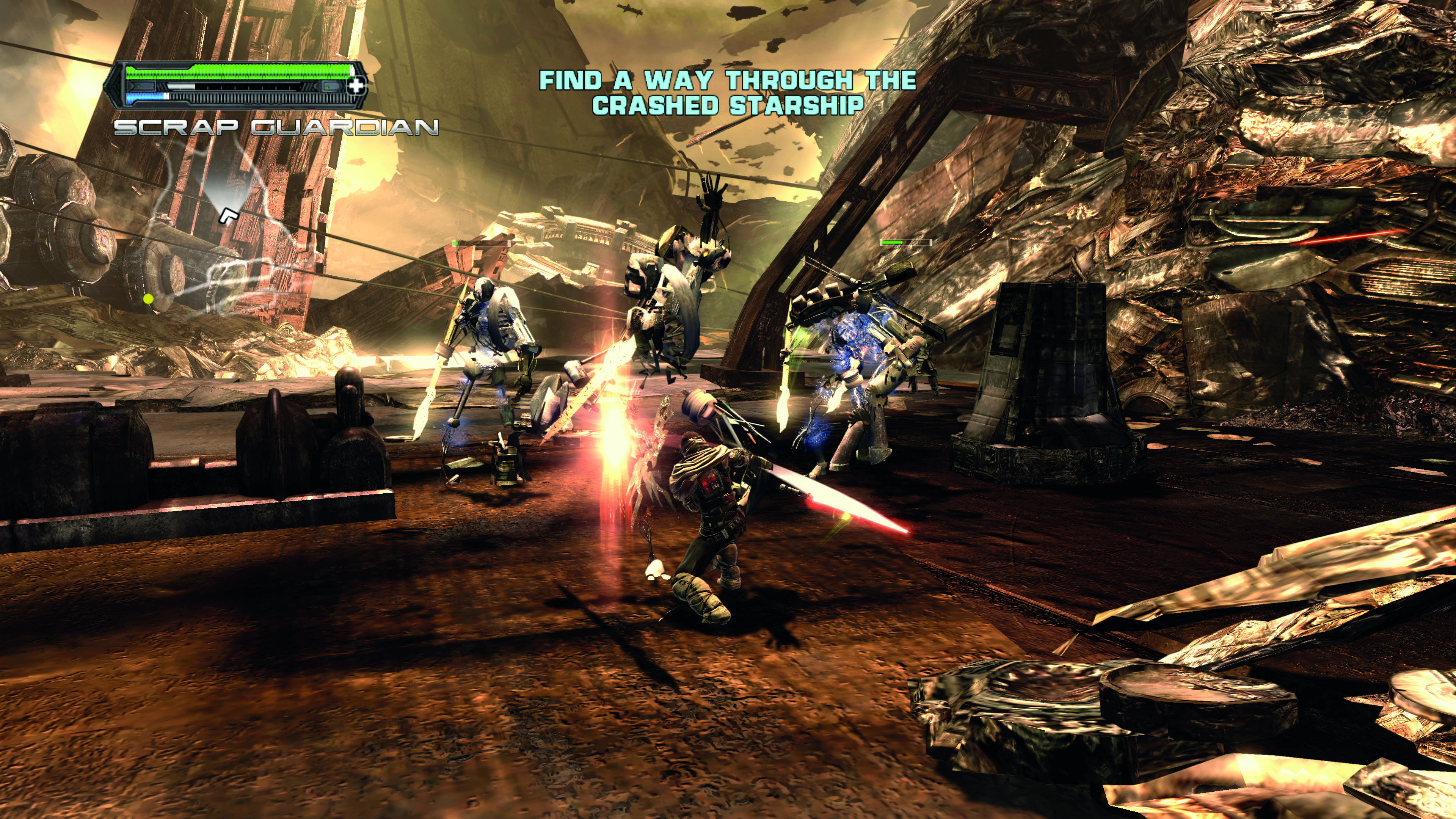
The Force Unleashed II follows a very similar formula, though feels immediately more responsive in the hands. Dual-wielding lightsabers doesn’t change how things play much, but does introduce flashy new animation to accompany fresh combos (which are mostly about more smoothly weaving in force pushes and lightning between slashes).
Once again stripped of his identity, Starkiller must journey across new planets, this time in order to understand himself and what he wants to fight for. Levels are prettier, longer, and more varied than in the first game. The problem is a lack of variety, as you essentially have only two planets and a starship to fight through (DLC adds Endor), and it’s a much shorter game overall.
The duology is melodramatic to the max, which has an appeal all of its own. Combat is simplistic yet satisfying, and does the job of making you feel genuinely like a superpowered Jedi (if Luke Skywalker had possessed a tenth of Starkiller’s power the series would have been over in 15 minutes). But the games are also very much of their time – about as 'T for Teen' edgy as PS3 games got. There’s an appeal to Star Wars’ darker characters, with their tragic falls and compromised morals, but they get lost in a sea of button-mashing laser-thwacking.
PlayStation Star Wars games: the rebels
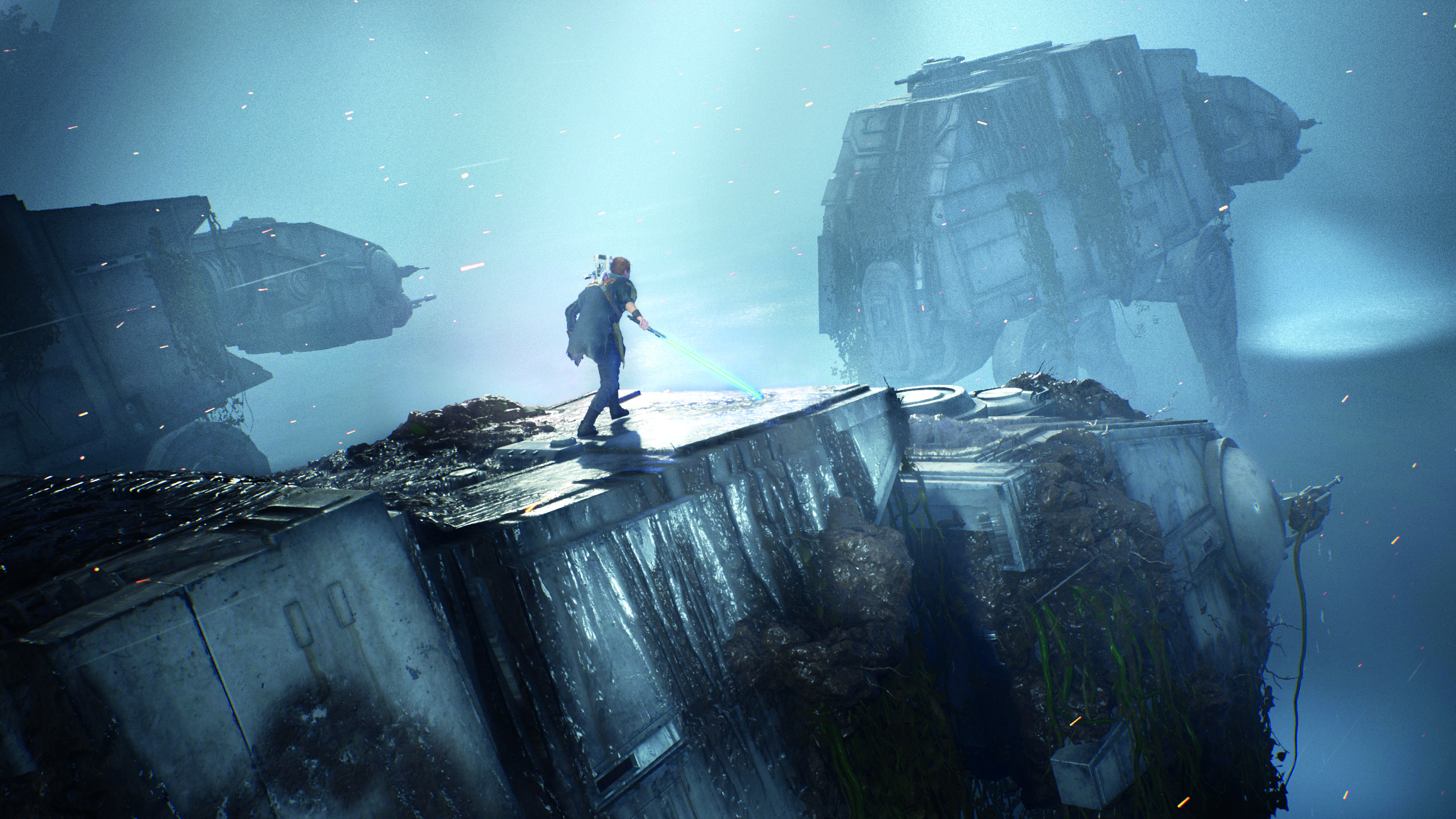
Cal Kestis lost everything he held dear thanks to two digits. When Order 66 was enacted, the Jedi who served the Republic in the Clone Wars were branded traitors and massacred, while at the same time the Supreme Chancellor Palpatine seized absolute power and turned the democracy into a fascist Empire that served the dark side of the Sith.
Those who escaped, often at the cost of seeing their only loved ones murdered in front of them, had to flee into hiding – the Jedi Order all but becoming a myth between Episodes III and IV – lest they be detained without cause and shipped off to a facility with no record of their existence.
Star Wars Jedi: Fallen Order introduces us to Cal, who’s found a life for himself disassembling old starships, his Jedi past firmly in the pod’s rearview. Until, that is, his colleague and friend Prauf is almost crushed on the job and he uses the force to pull him to safety. It’s not long before the Jedi-hunting Inquisitors come knocking, and Cal ends up narrowly escaping with the crew of the Mantis, led by former Jedi Master Cere Junda. She needs some force assistance to track down a missing Jedi Holocron that contains details of all known force sensitives in the galaxy so she can begin to rebuild the Jedi Order… while at the same stopping the device from falling into the hands of the Empire, which would use it to make the lives of those tracked a living hell. Fallen Order was developed by Respawn Entertainment (Titanfall), and the team led by God Of War III’s Stig Asmussen and other action game veterans – and that pedigree shows.
Cue running and jumping around a variety of planets beloved by fans (Dathomir! Kashyyyk! Ilum!), mixing the considered combat of a soulslike with metroidvania-style exploration. While Cal can acquire the time-honoured gaming Jedi power of the ‘double jump’, he won’t have it right away, meaning sections of the planets will open up periodically (if only it had fast travel…). The crunchy lightsaber combat is some of the most satisfying in the series, and the difficulty can be fully adjusted to make sure anyone can go on the adventure.
Getting to know the crew of The Mantis is reminiscent of Star Wars: Rebels, but with a more mature tone and characters that feel memorable and distinct; you grow to love them on their own terms. Each is dealing with their own trauma because of the rise of the Empire, and each is able to heal a little by sharing the load with one another. It’s neatly echoed by the Inquisitors who hunt them down – they’re force users with their own traumas, forced into a cycle of pain by the uncaring regime they have little choice but to serve.
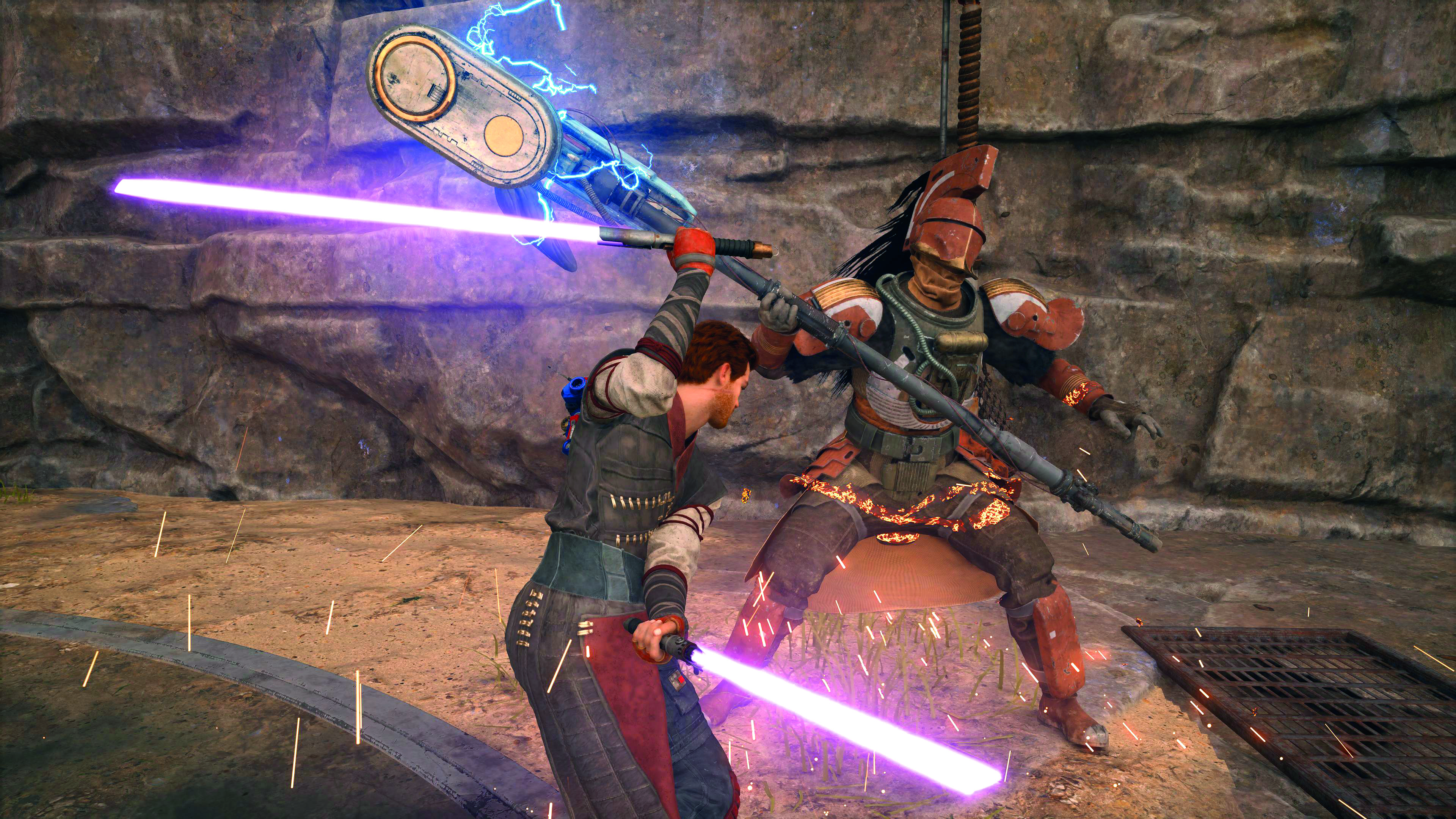
The sequel, Star Wars Jedi: Survivor, builds out Fallen Order’s excellent premise in just about every direction imaginable – which is more good than bad, but does introduce some flaws. Not only is it much bigger in physical scale (hub planet Koboh is a massive open world), its story is much more sweeping as well. Multiple fearsome antagonists, with their roots in multiple Star Wars eras, all come together, resulting in a high-stakes, if less personal, adventure for Cal, that doesn’t quite manage to land.
However, new lightsaber combat styles and ways to leap around are consistently exciting. Fleshing out the bones of what came before (Cal doesn’t really forget any powers from Fallen Order), there are some great, tricky platforming challenges here, though dashing through rings can feel a bit too gamey. Plenty of the side-content is substantial too, hiding many surprise encounters. Koboh’s size also makes it home to plenty of freaky little critters who are great to get to know beyond your primary crew, froggy pal Turgle chief among them.
It’s a shame that Respawn’s rumoured FPS has allegedly been cancelled, but we’re keen to see Cal return to cap off what could be one of the greatest gaming trilogies there is, as well as one of Star Wars’ best.
This article first appeared in Play Magazine. You can subscribe to the print edition, digital version, or save even more with the print/digital bundle – whatever you choose, you’ll be receiving an unprecedented trove of dedicated PlayStation coverage every month. If you like this, read our guide to the best retro consoles for more ways to play. And why not make your own game? Read our guides to Godot and GameMaker for ways to get started in game development.

Games Editor on GamesRadar+ and former PLAY editor, Oscar Taylor-Kent first joined Official PlayStation Magazine in 2018, and was involved with the long-standing mag’s rebrand into PLAY before becoming editor. Despite being a PlayStation expert (and noted PS Vita apologist), he’s got fingers on many buttons, having also written for SFX, PC Gamer, Kotaku, Waypoint, Official Xbox Magazine, GamesMaster, PCGamesN, and Xbox to name but a few. When not knee deep in character action games, JRPGs, and visual novels, he’s often found reading books, manga, or binging anime. His current favourite games include Devil May Cry, Persona, Ace Attorney, and Hakuoki.
